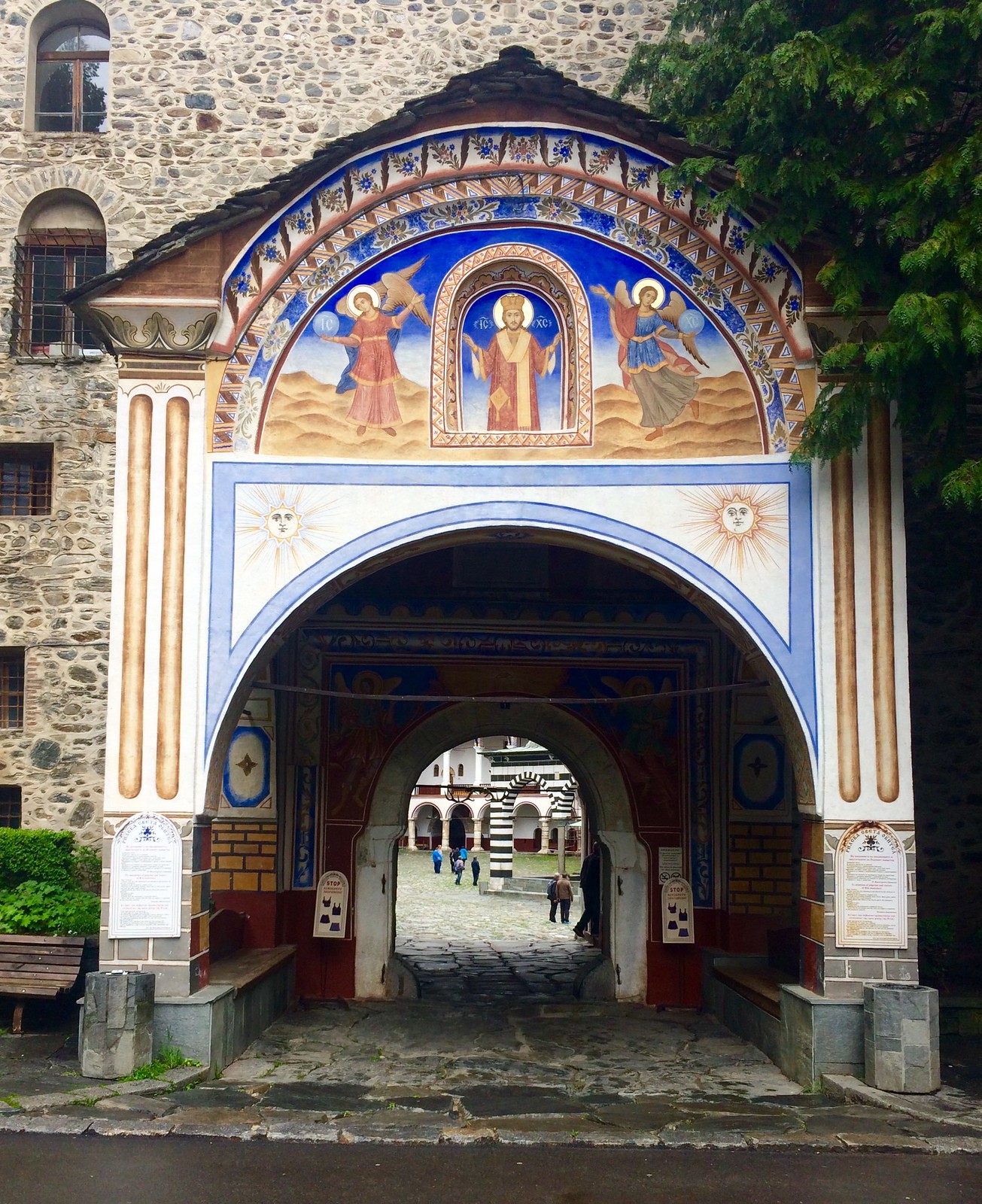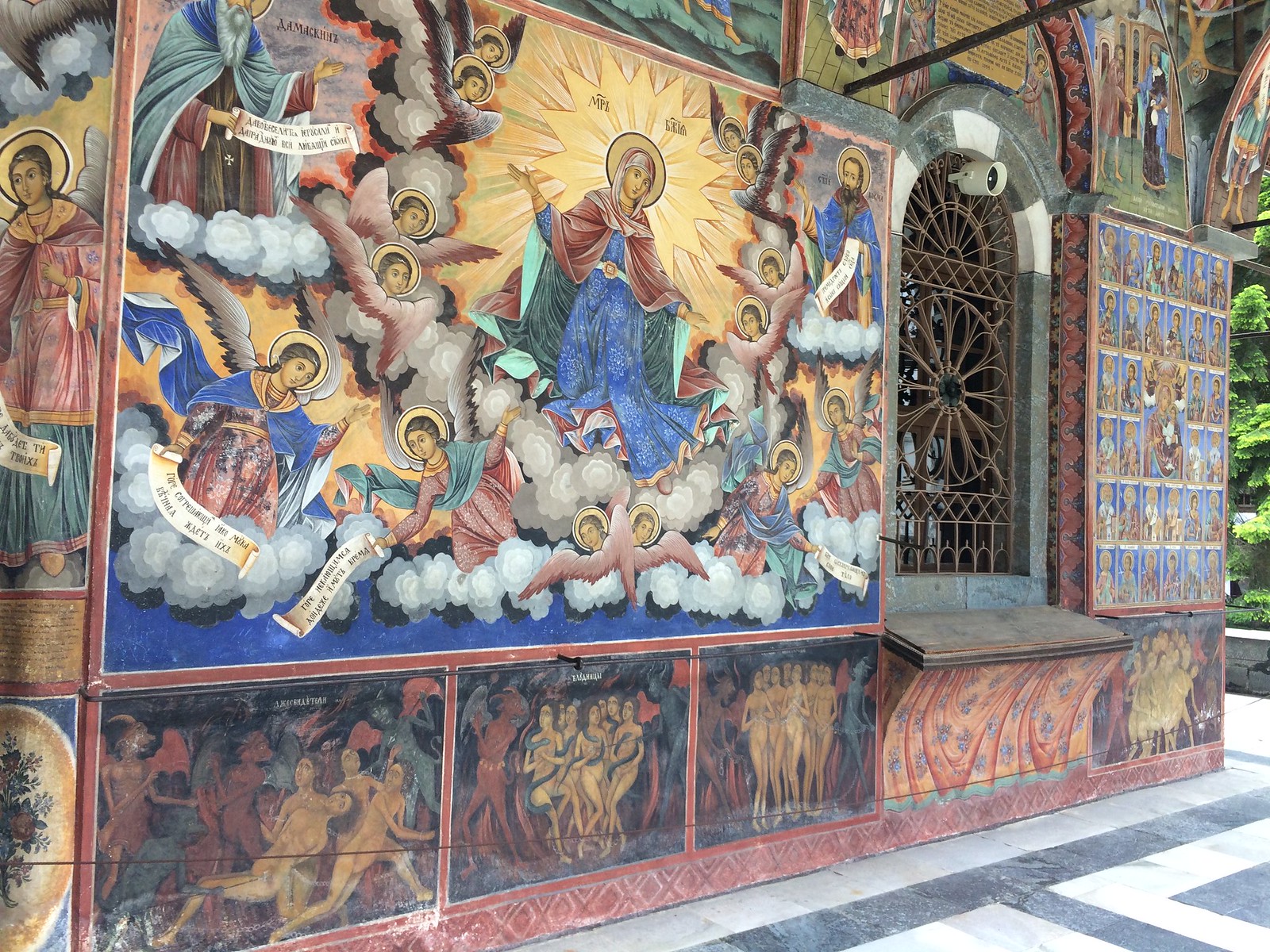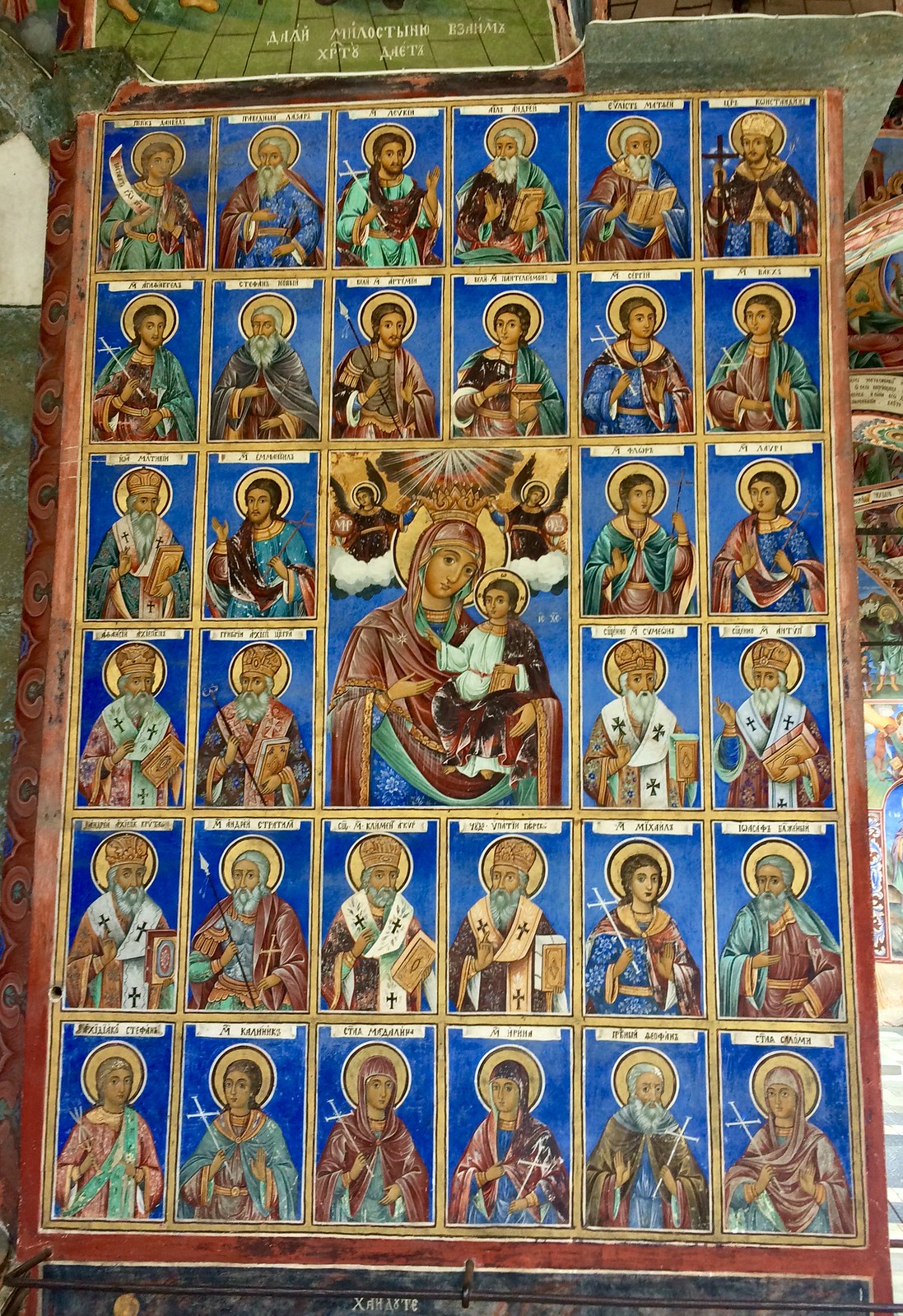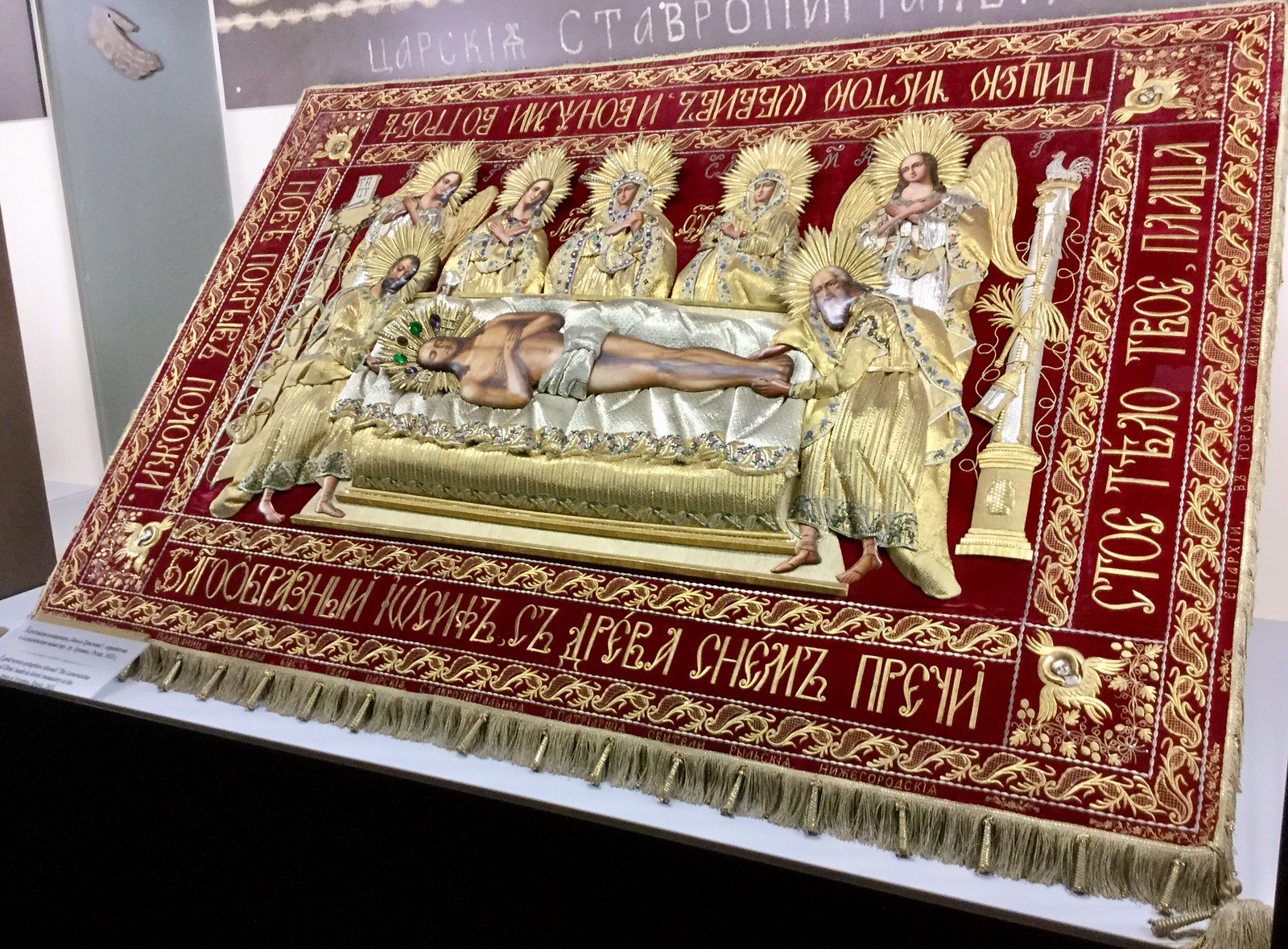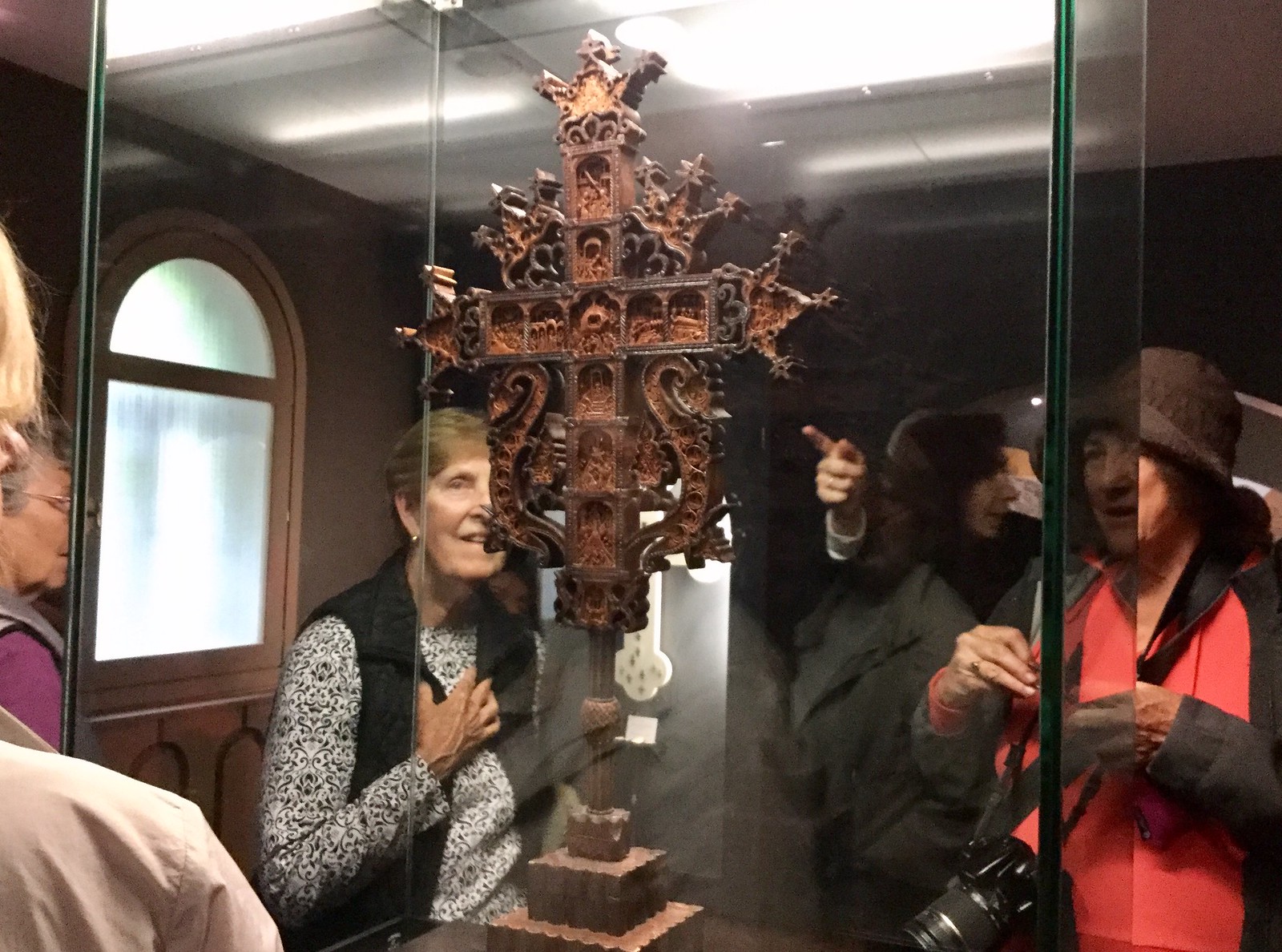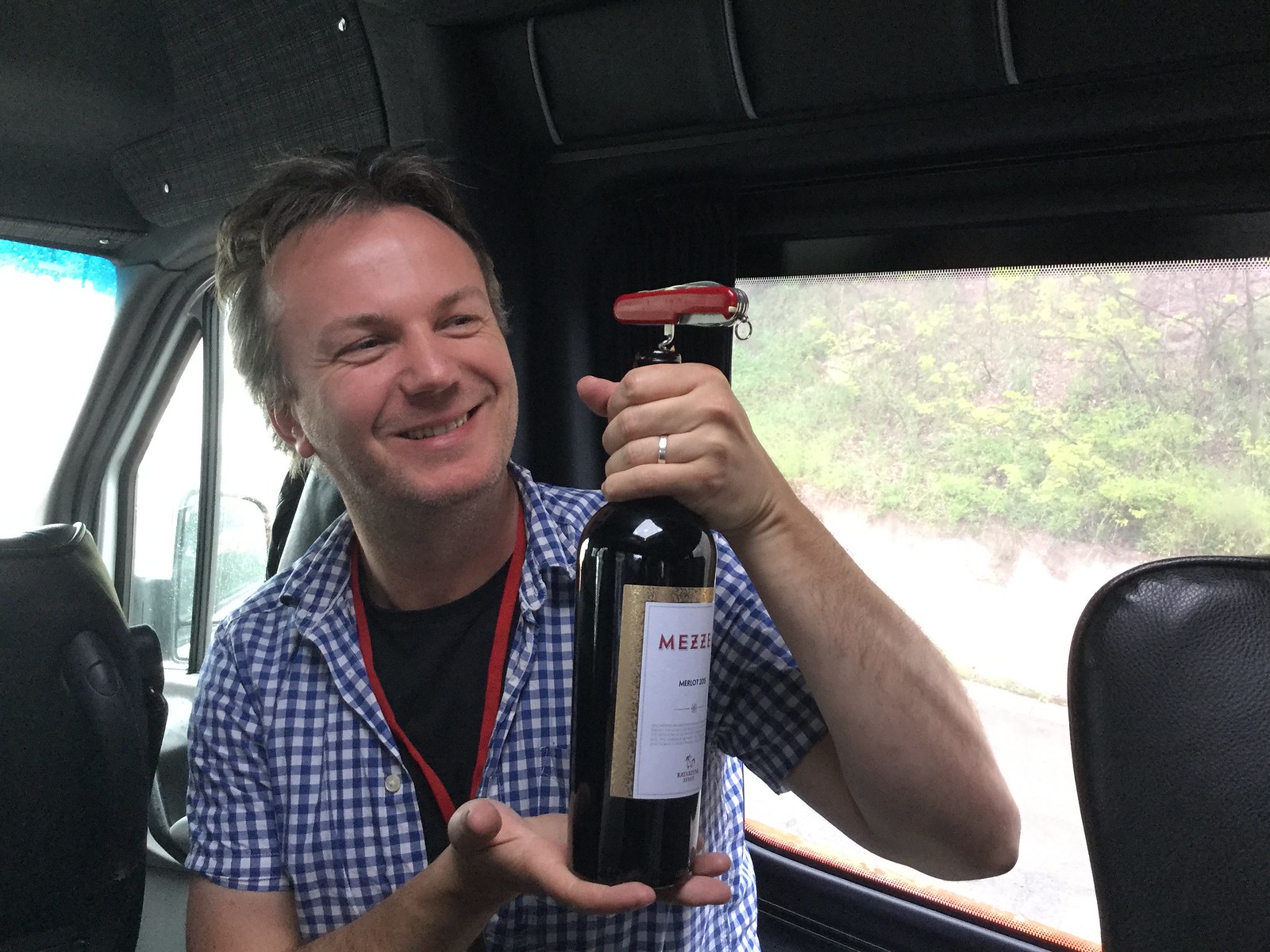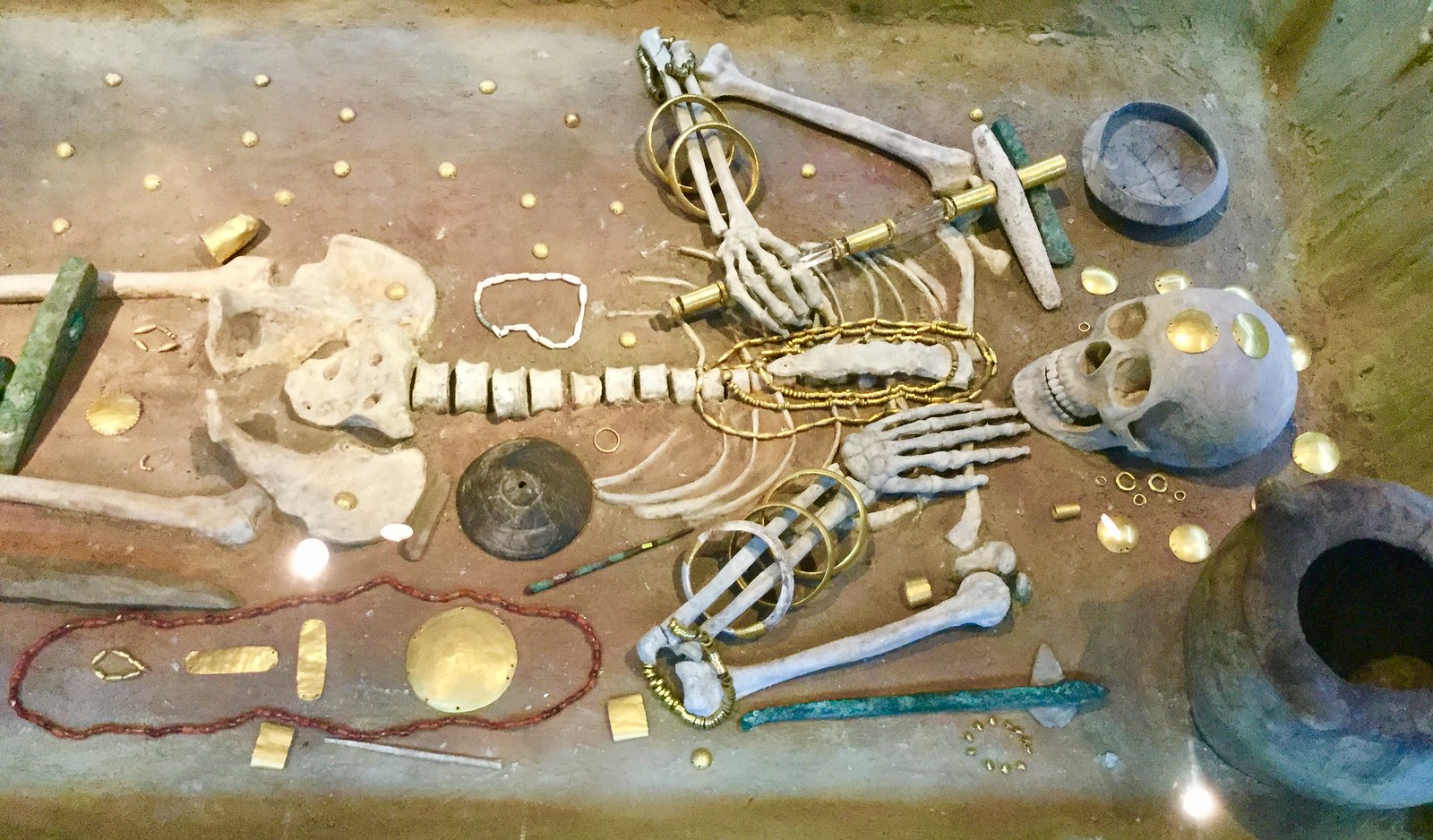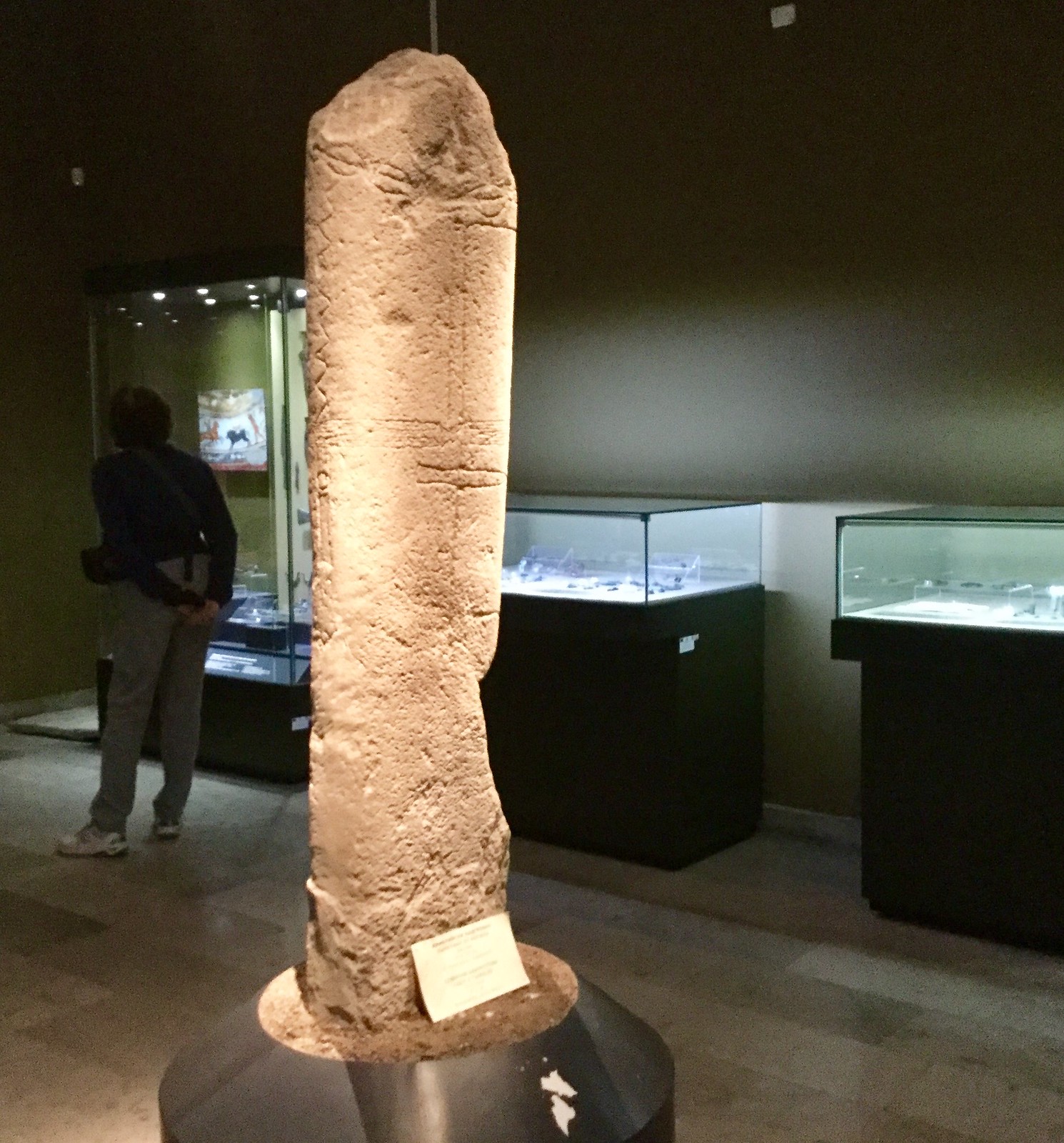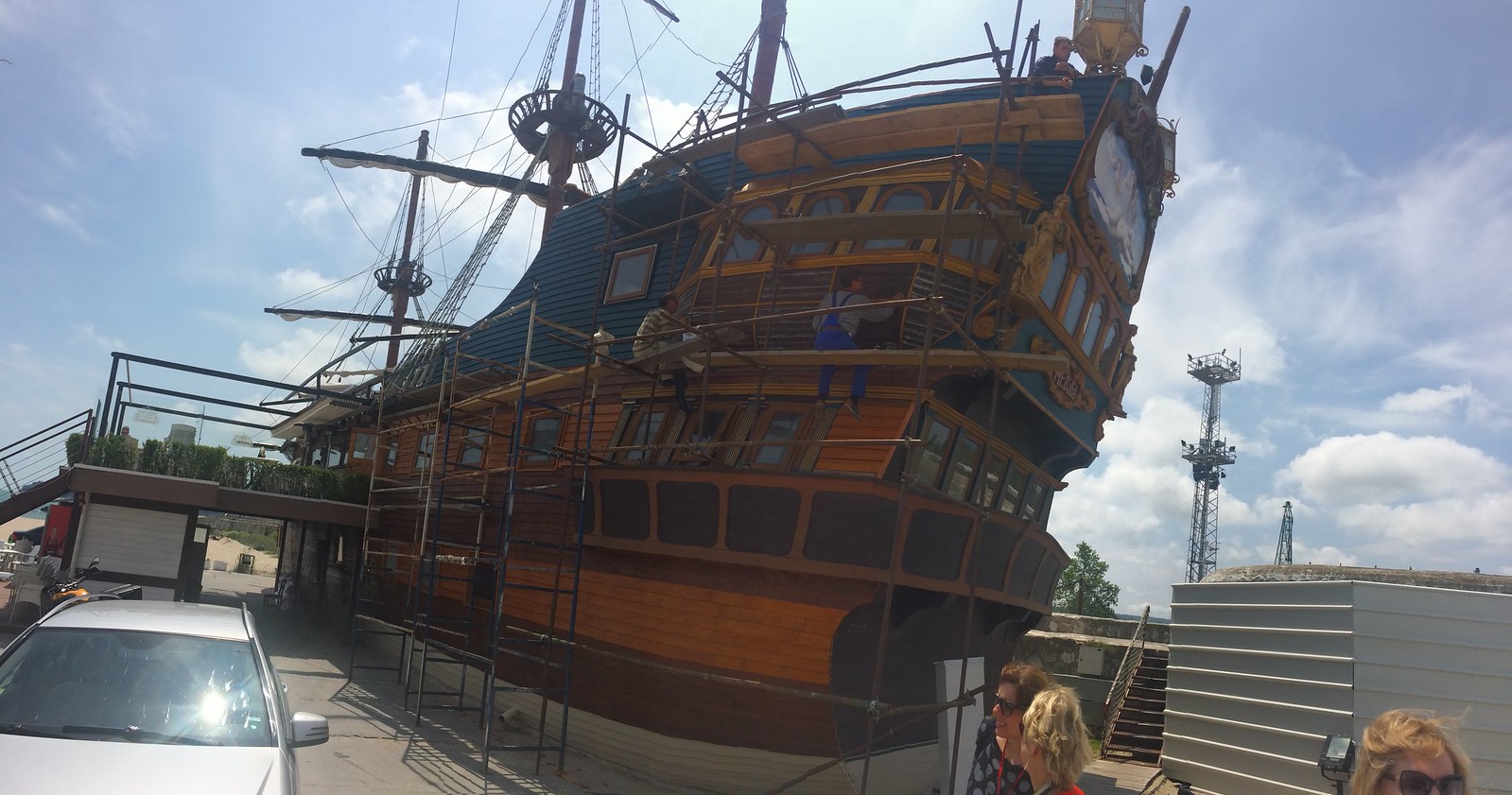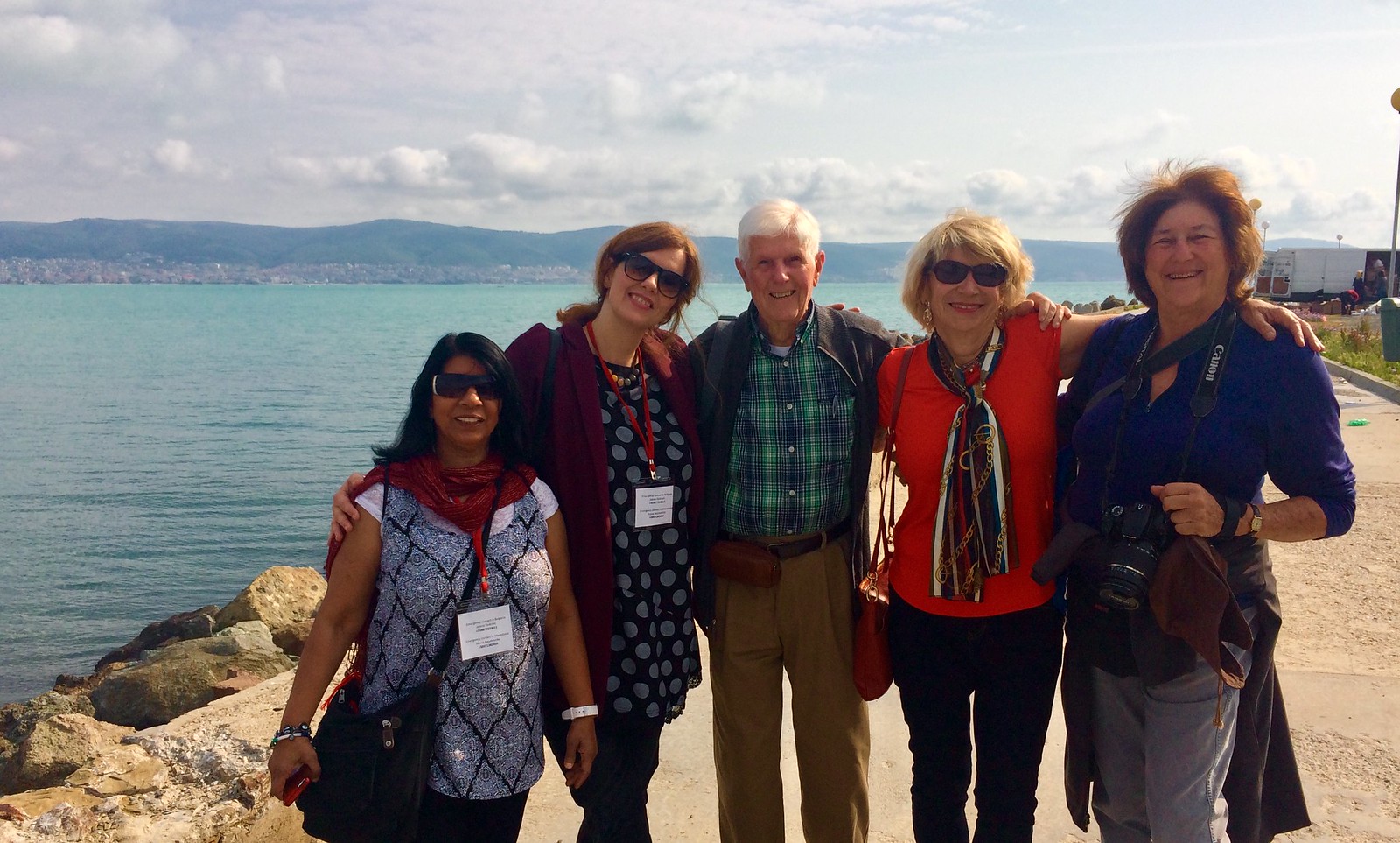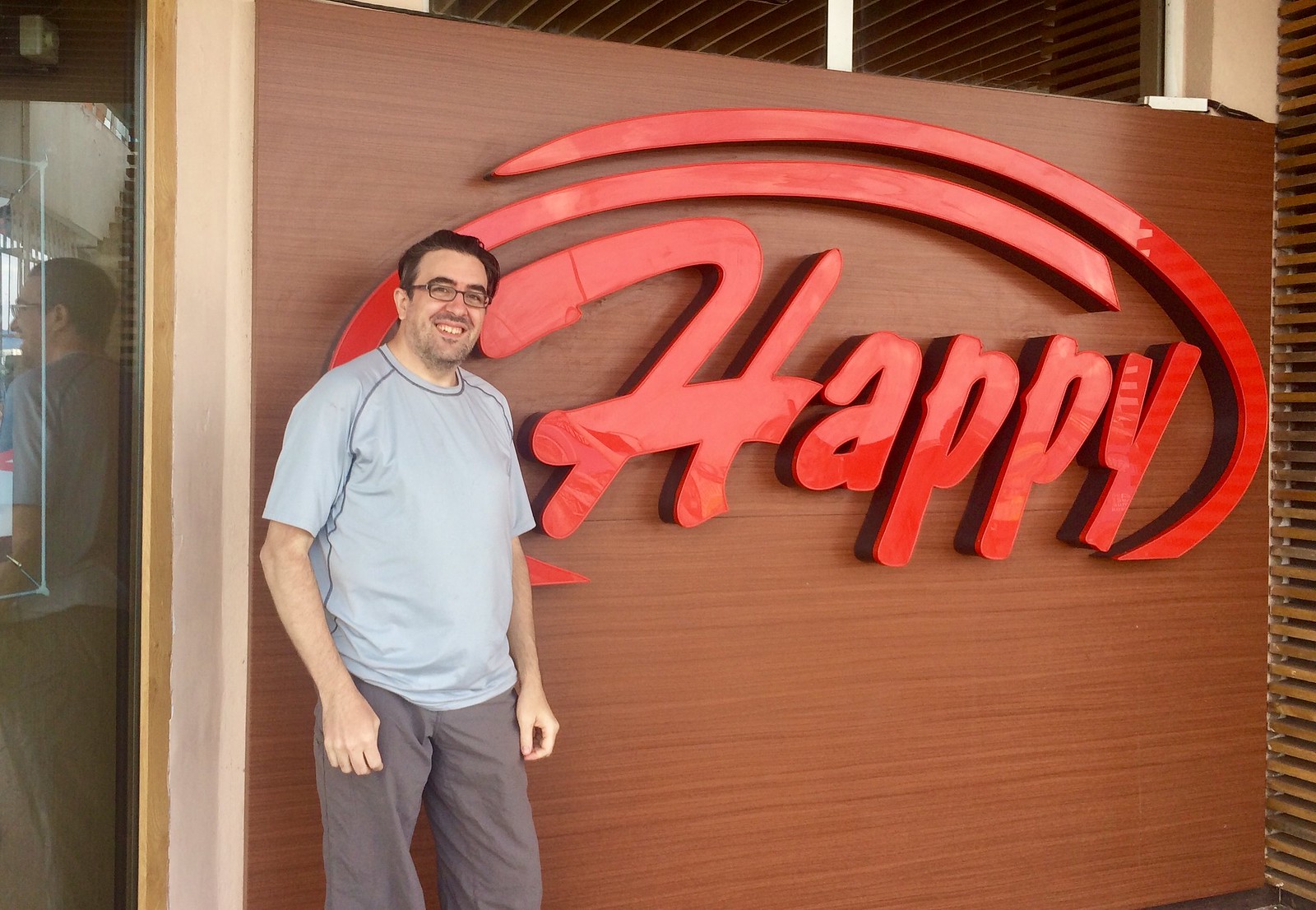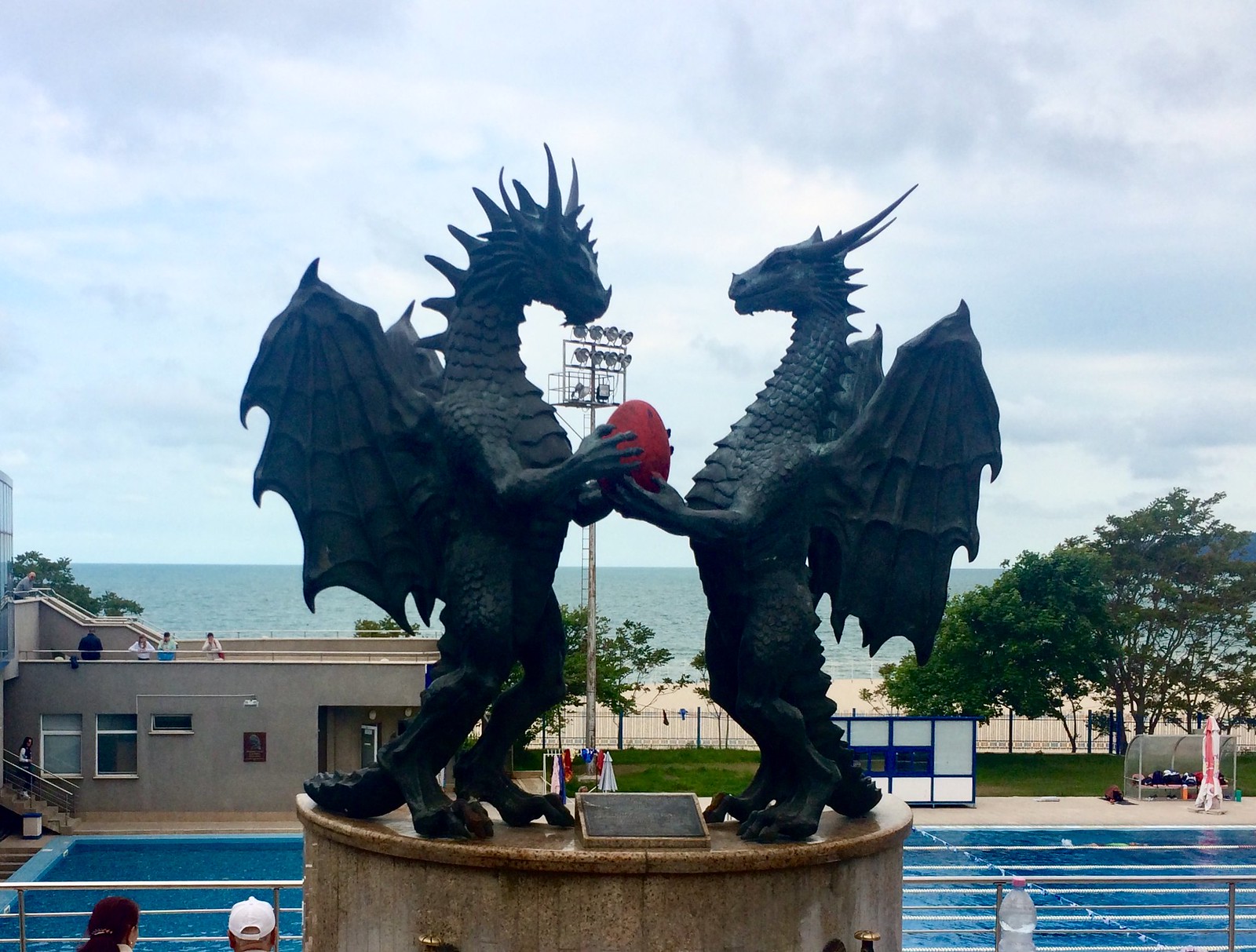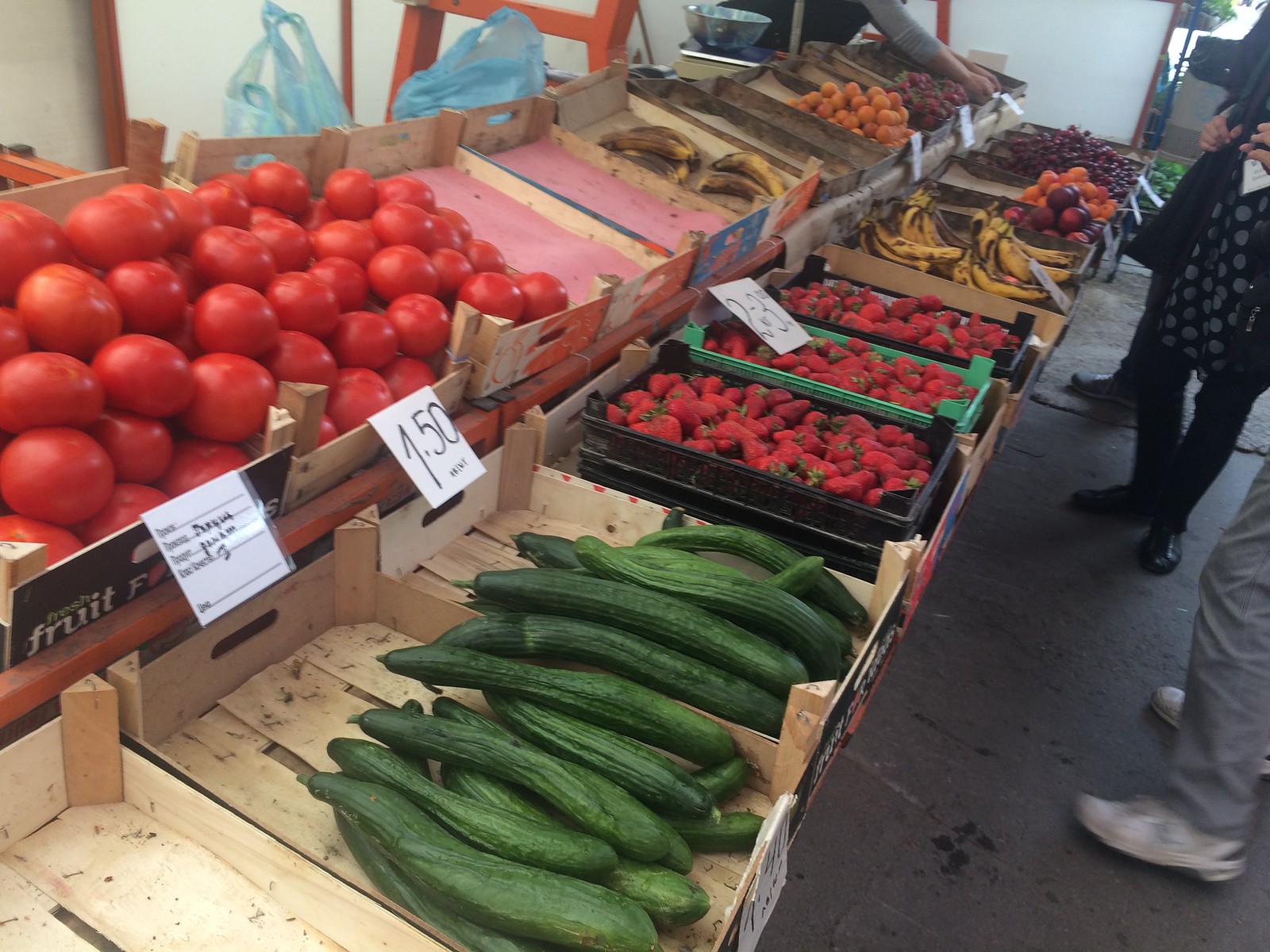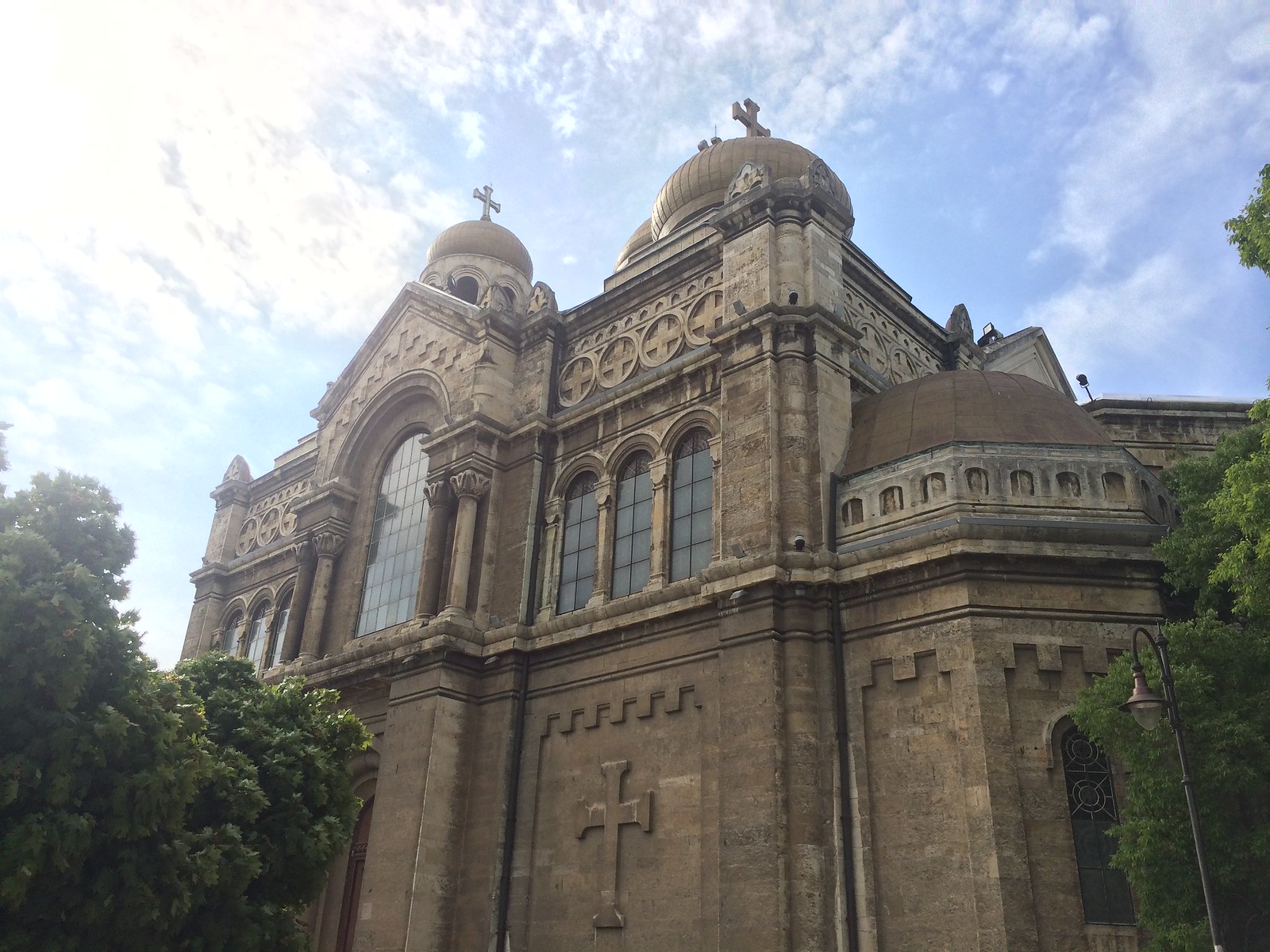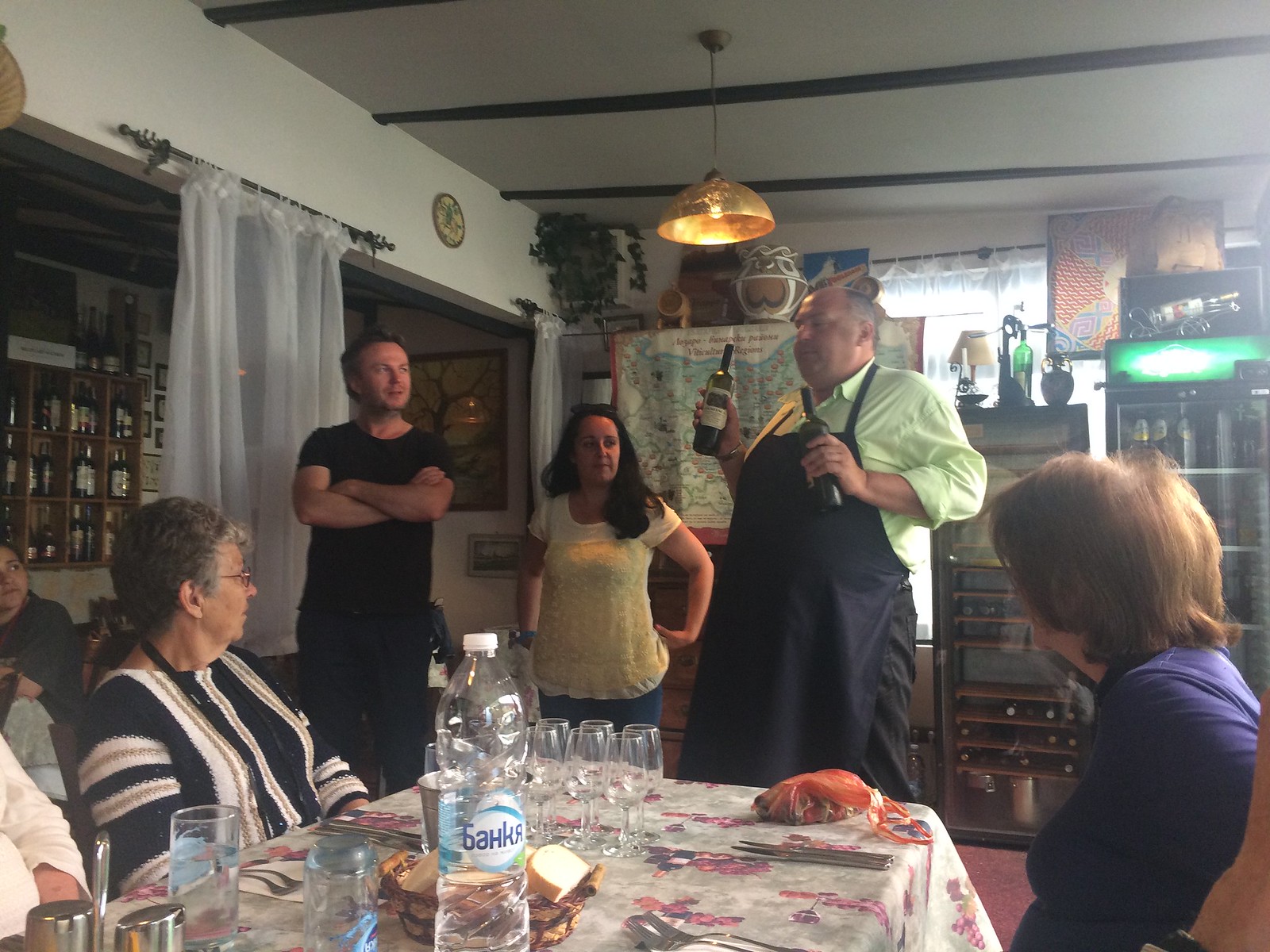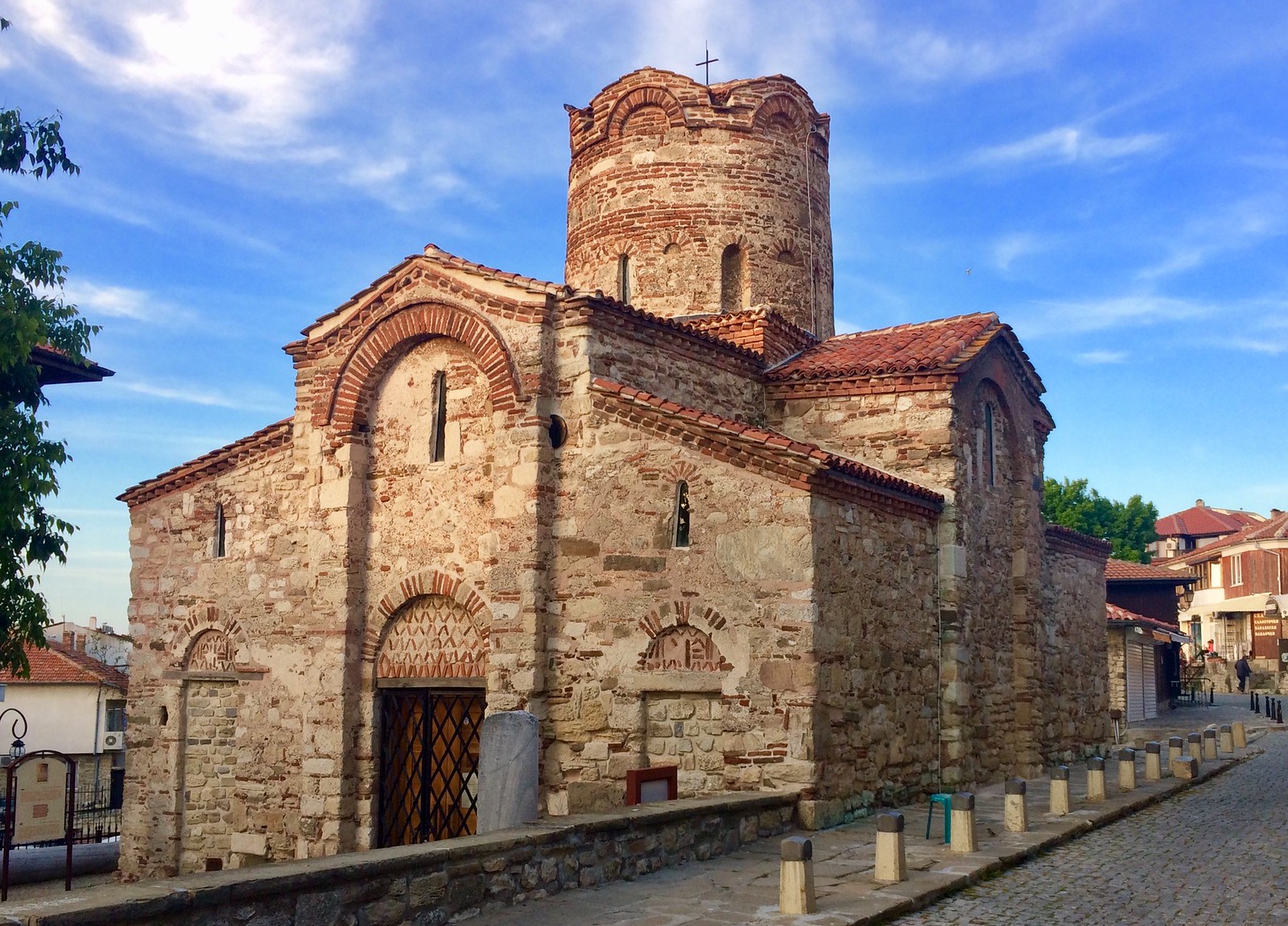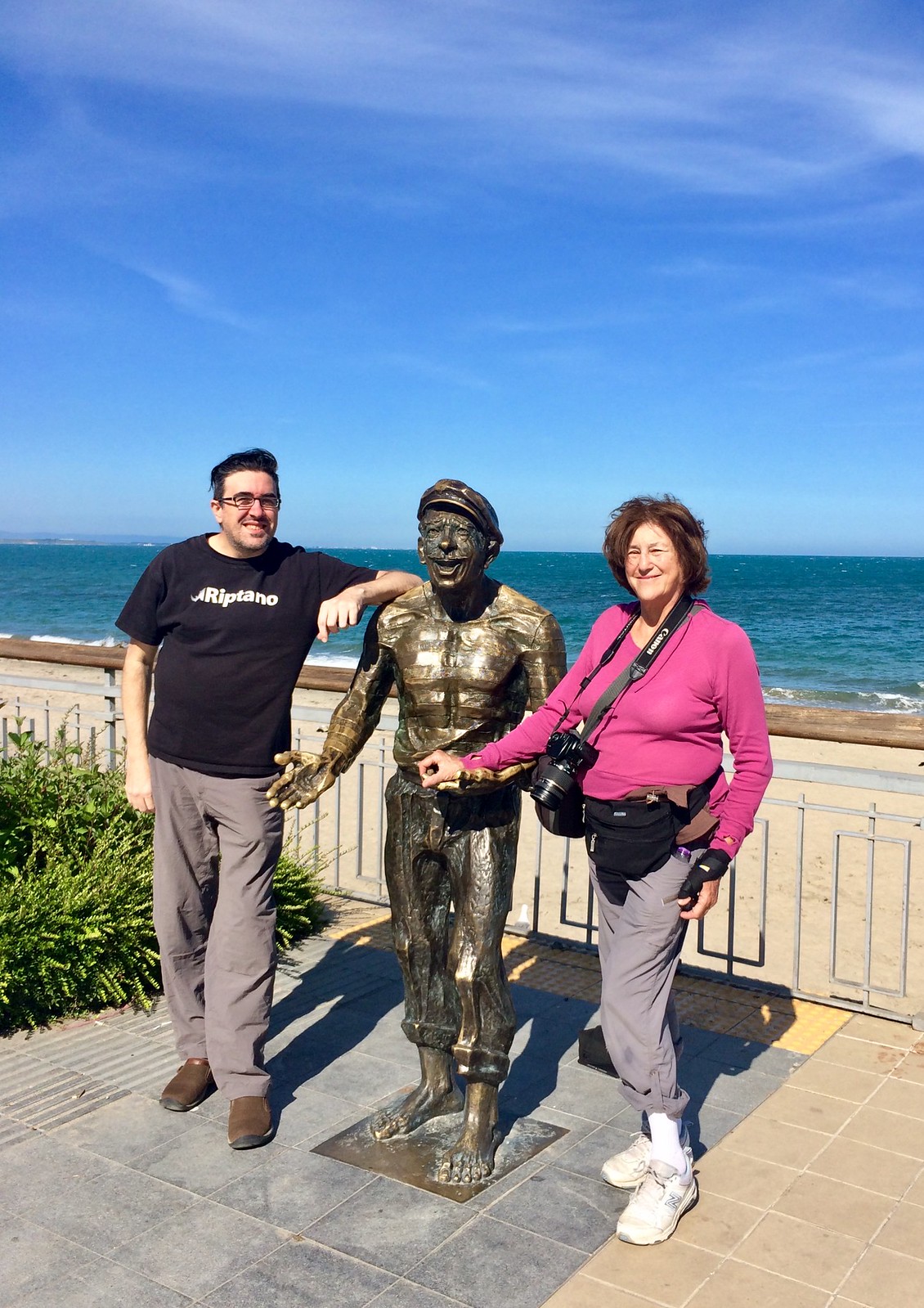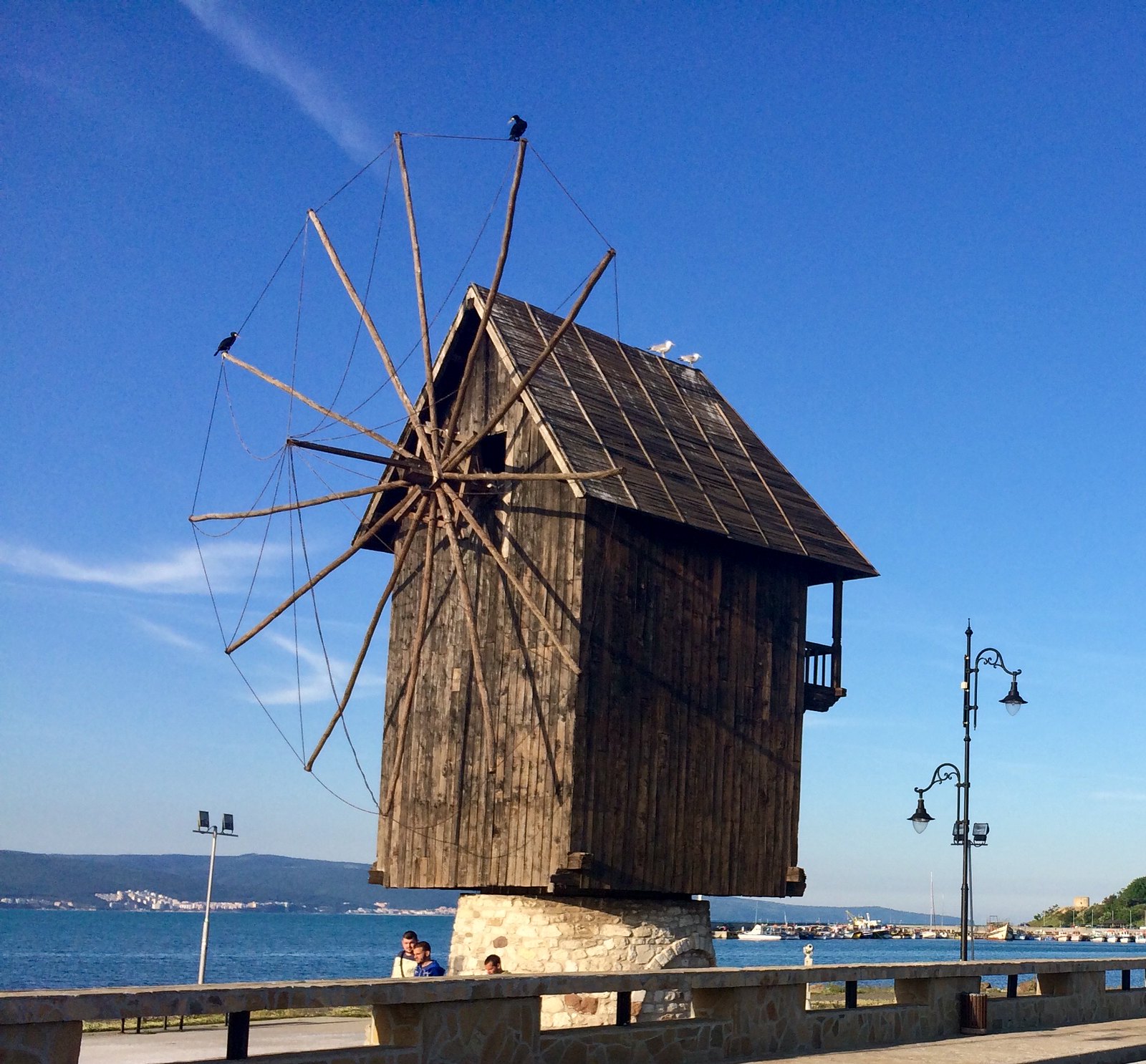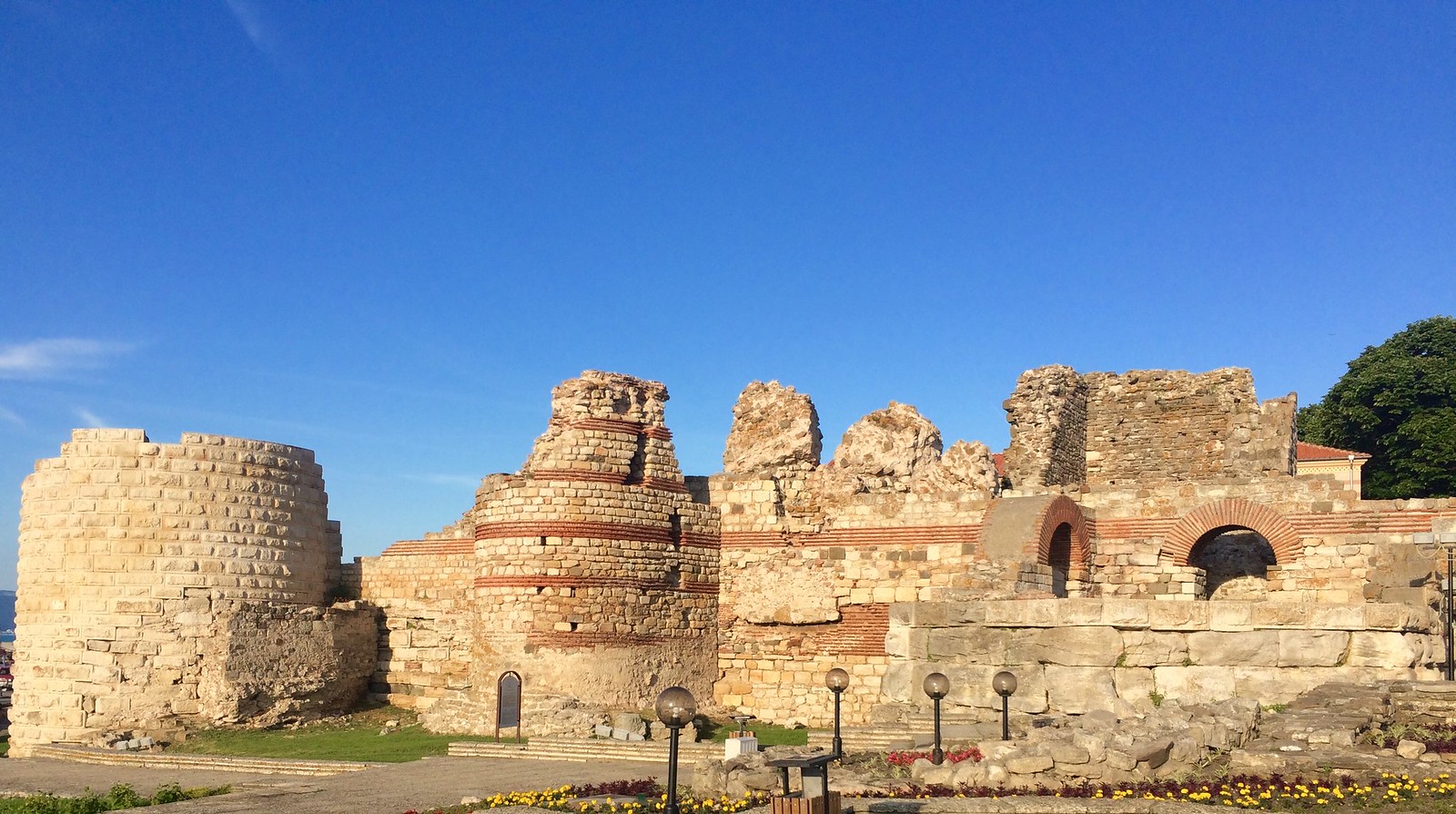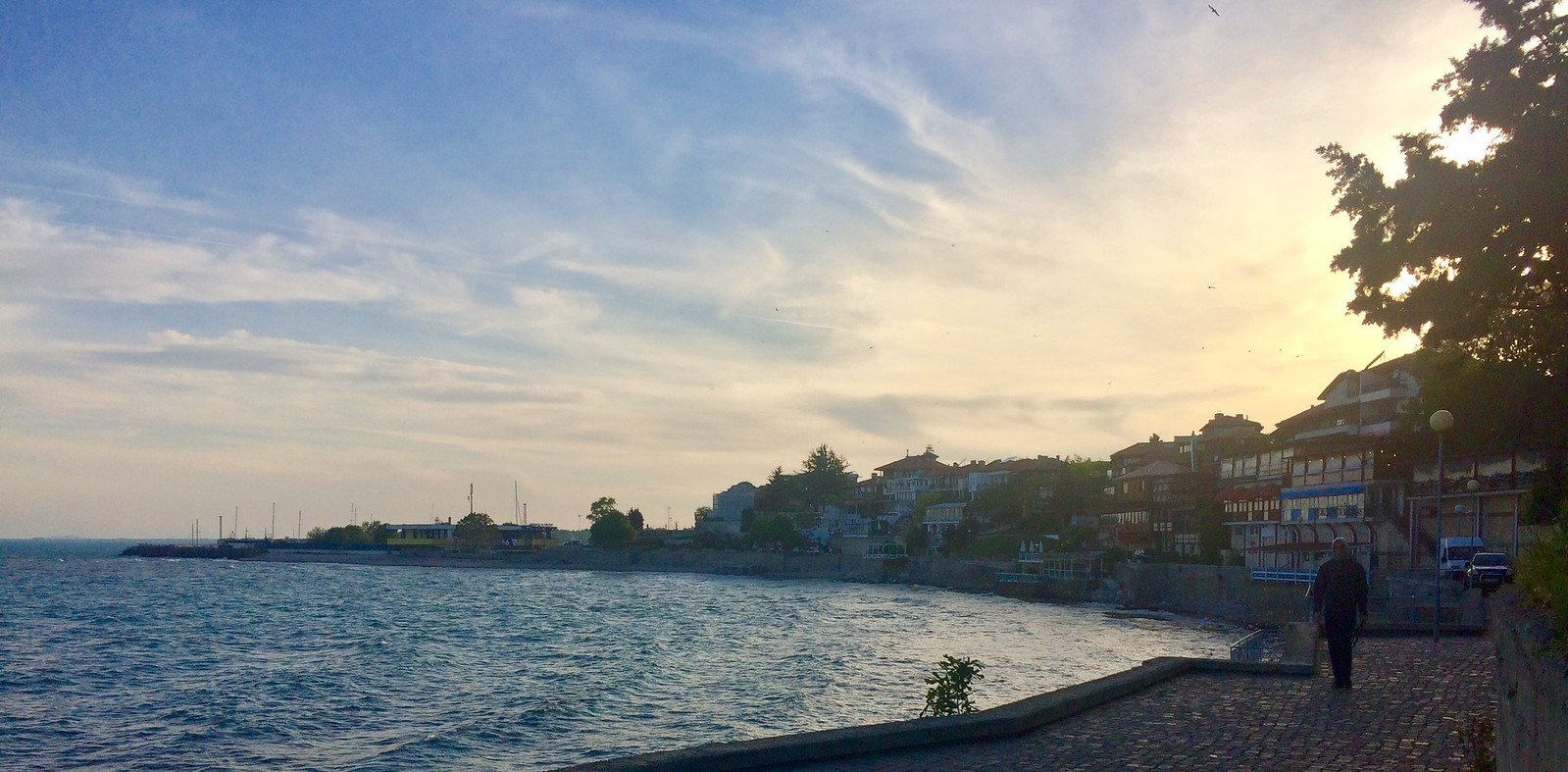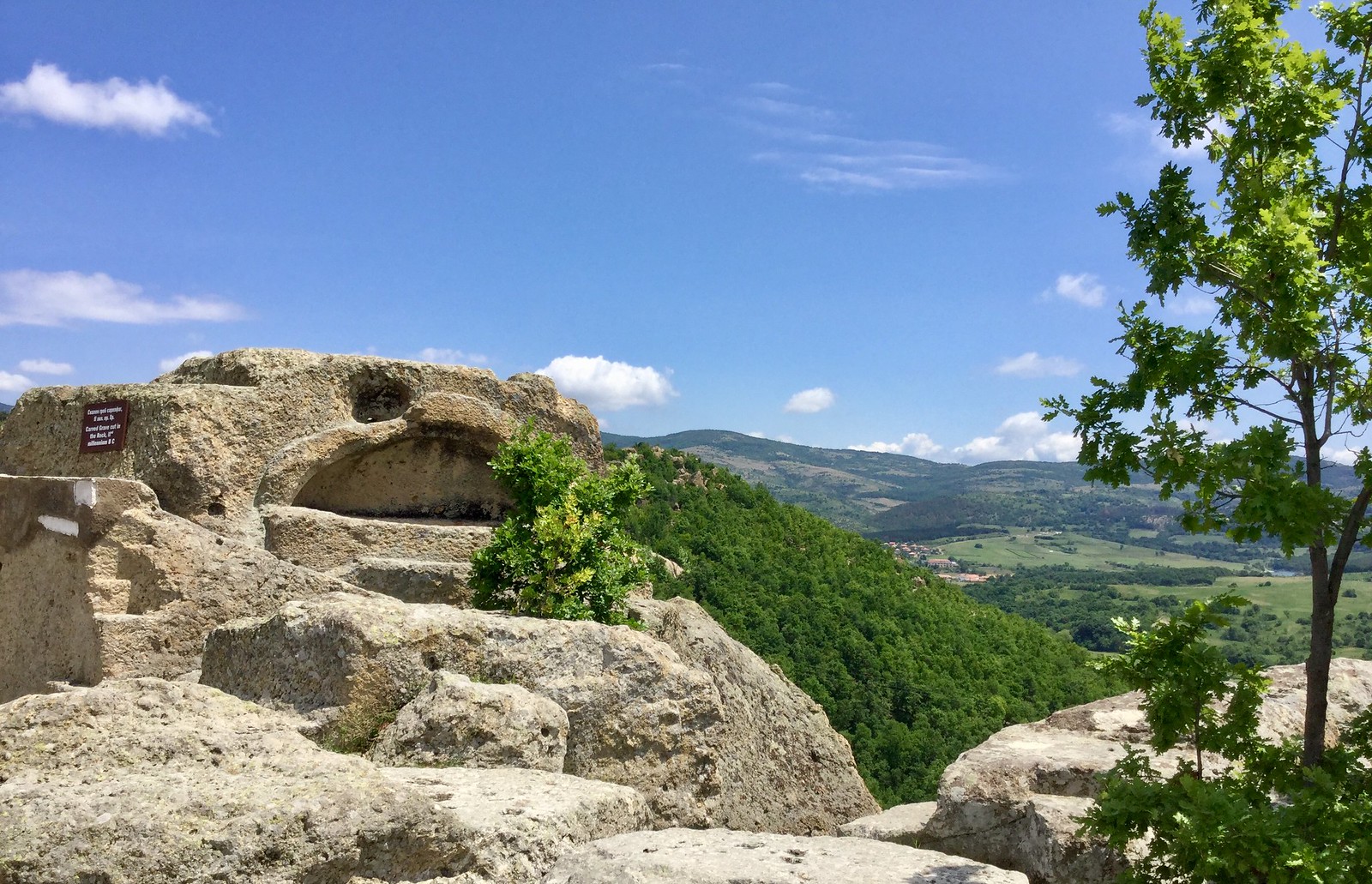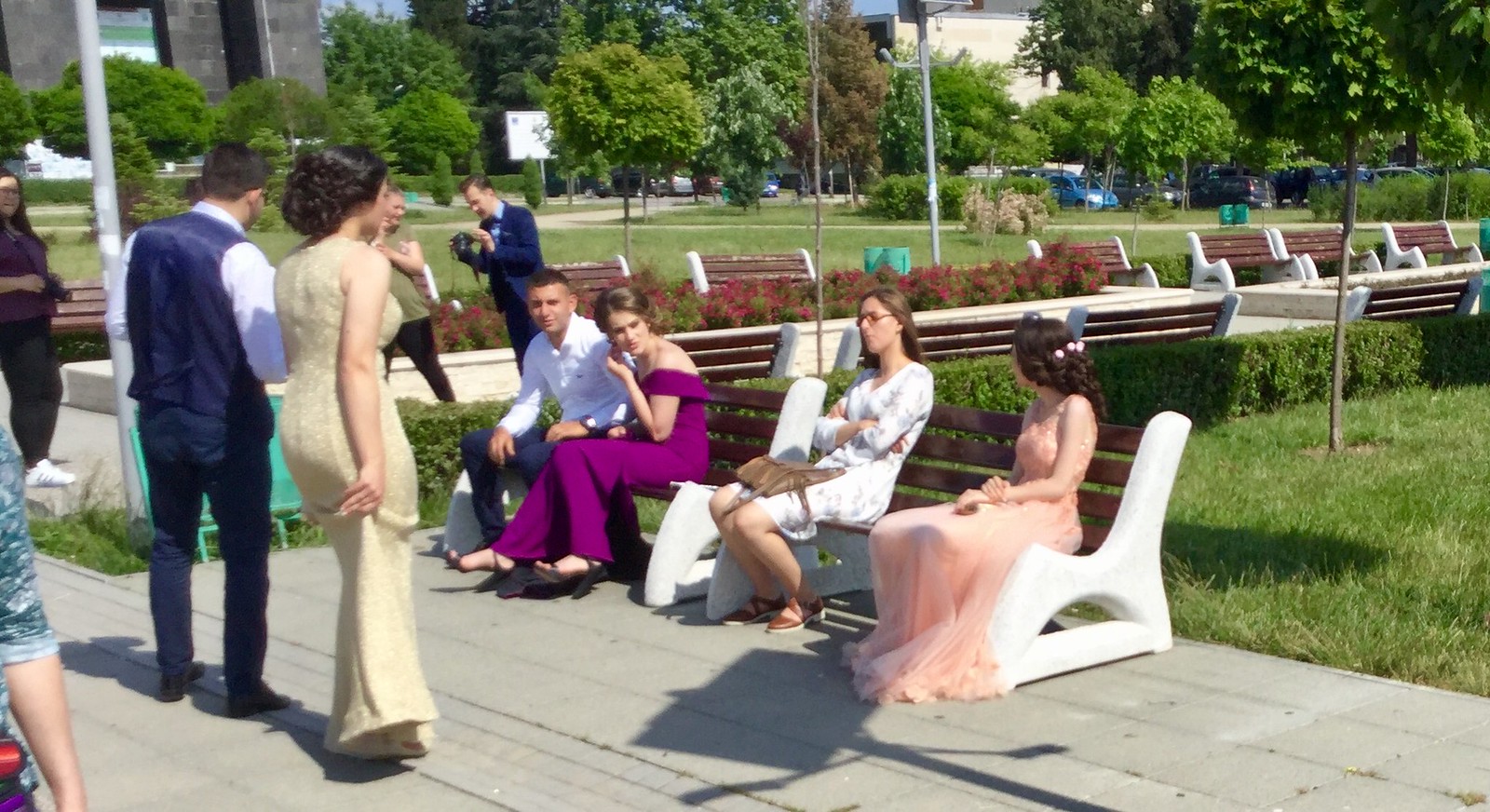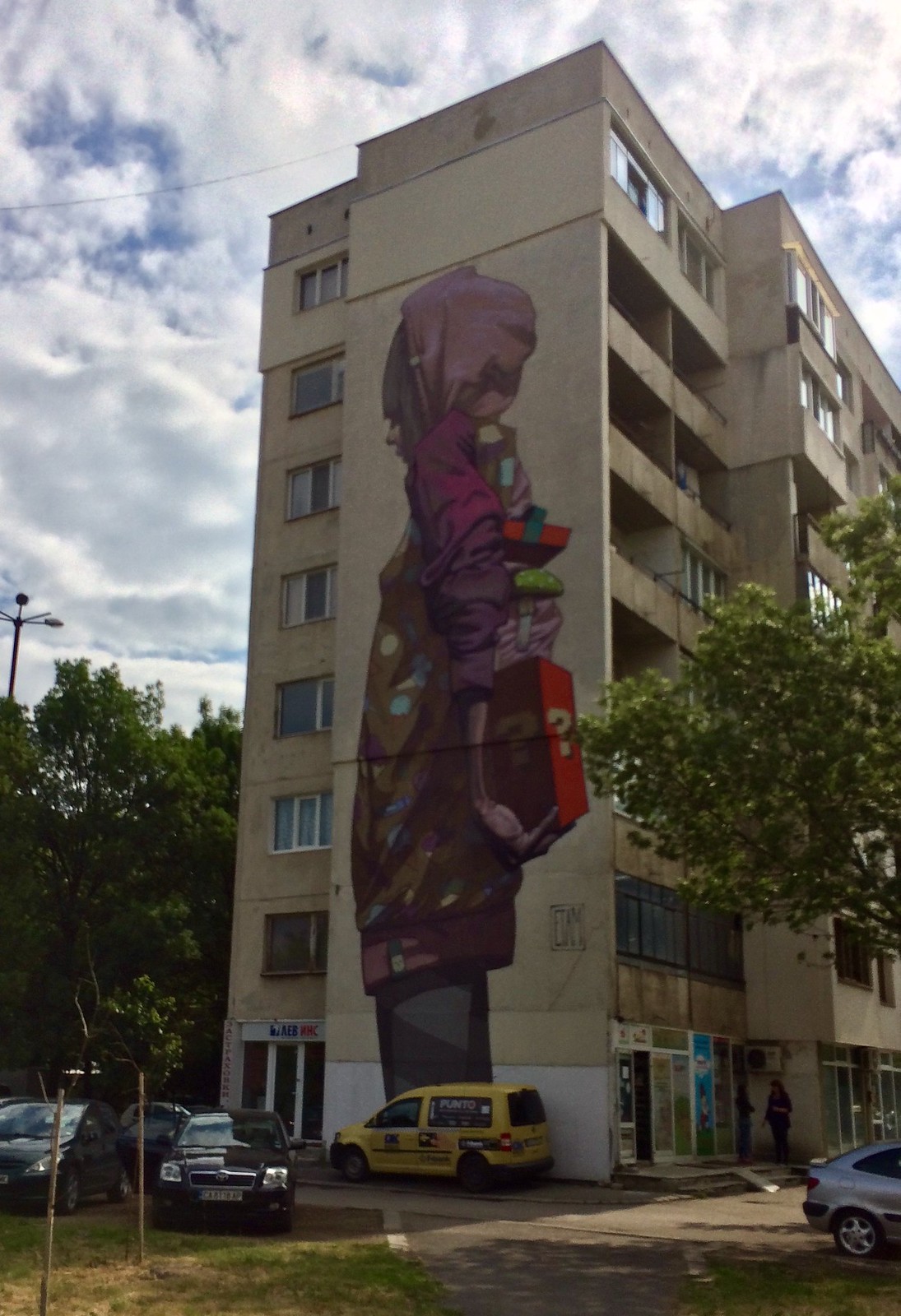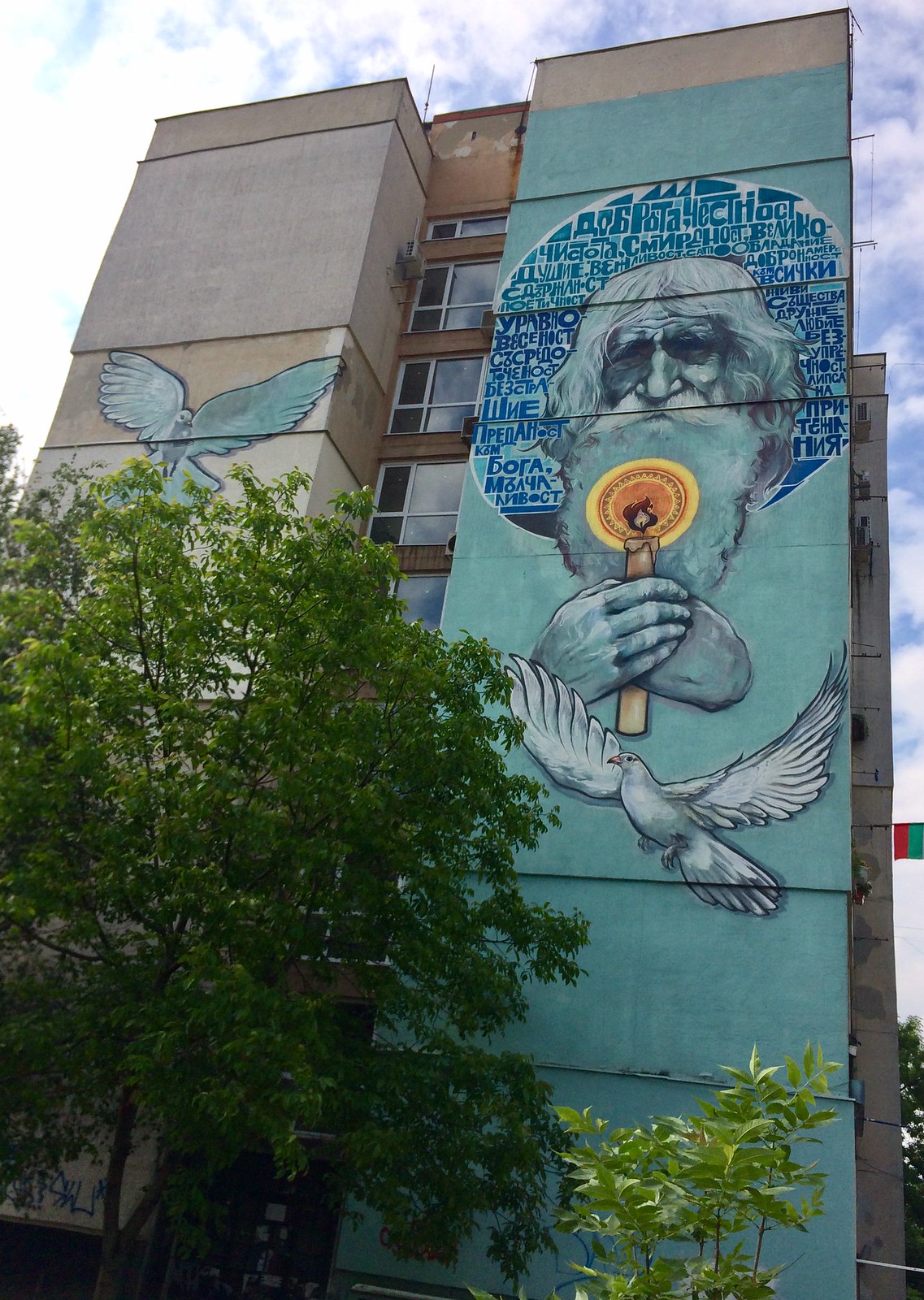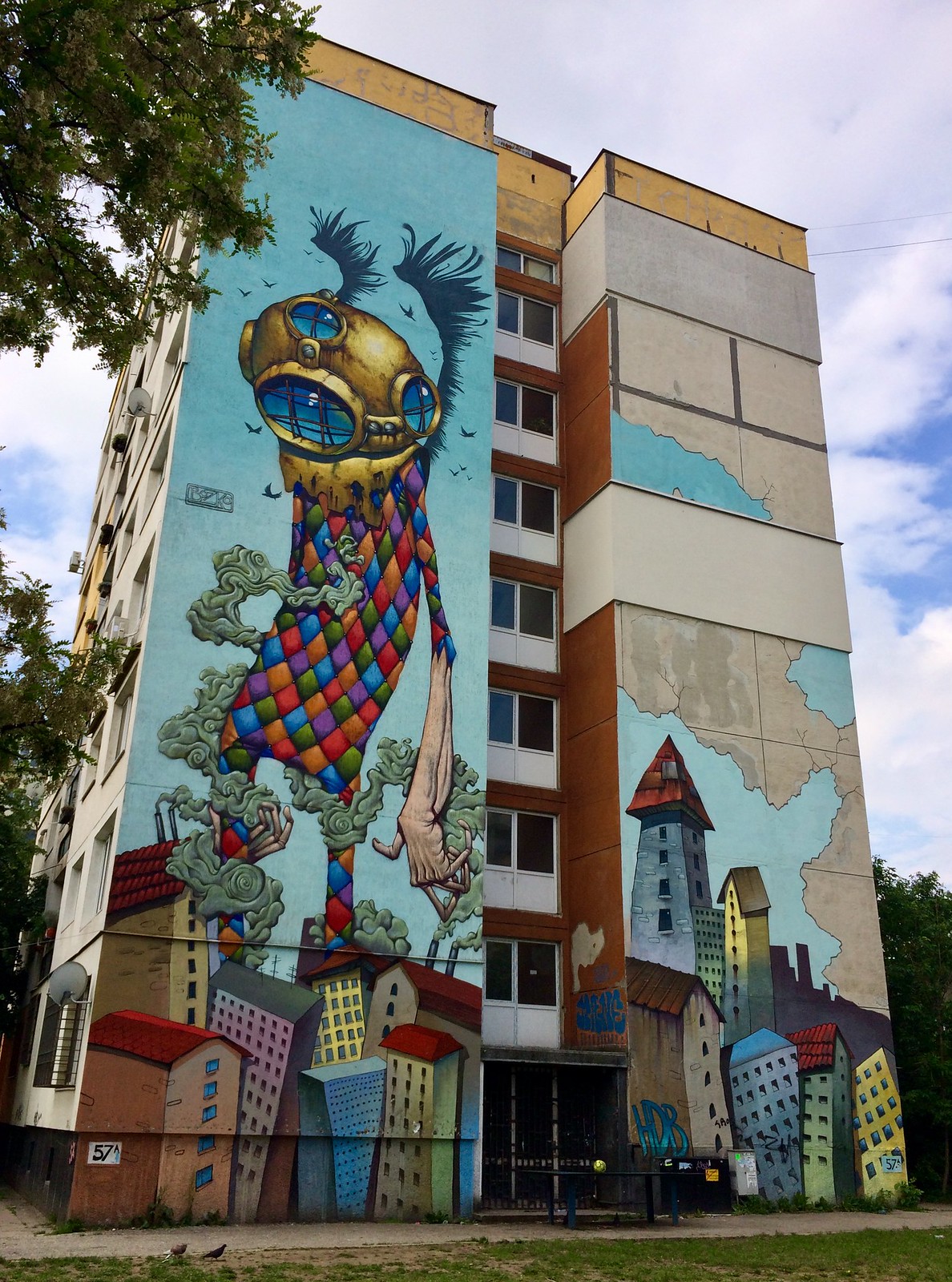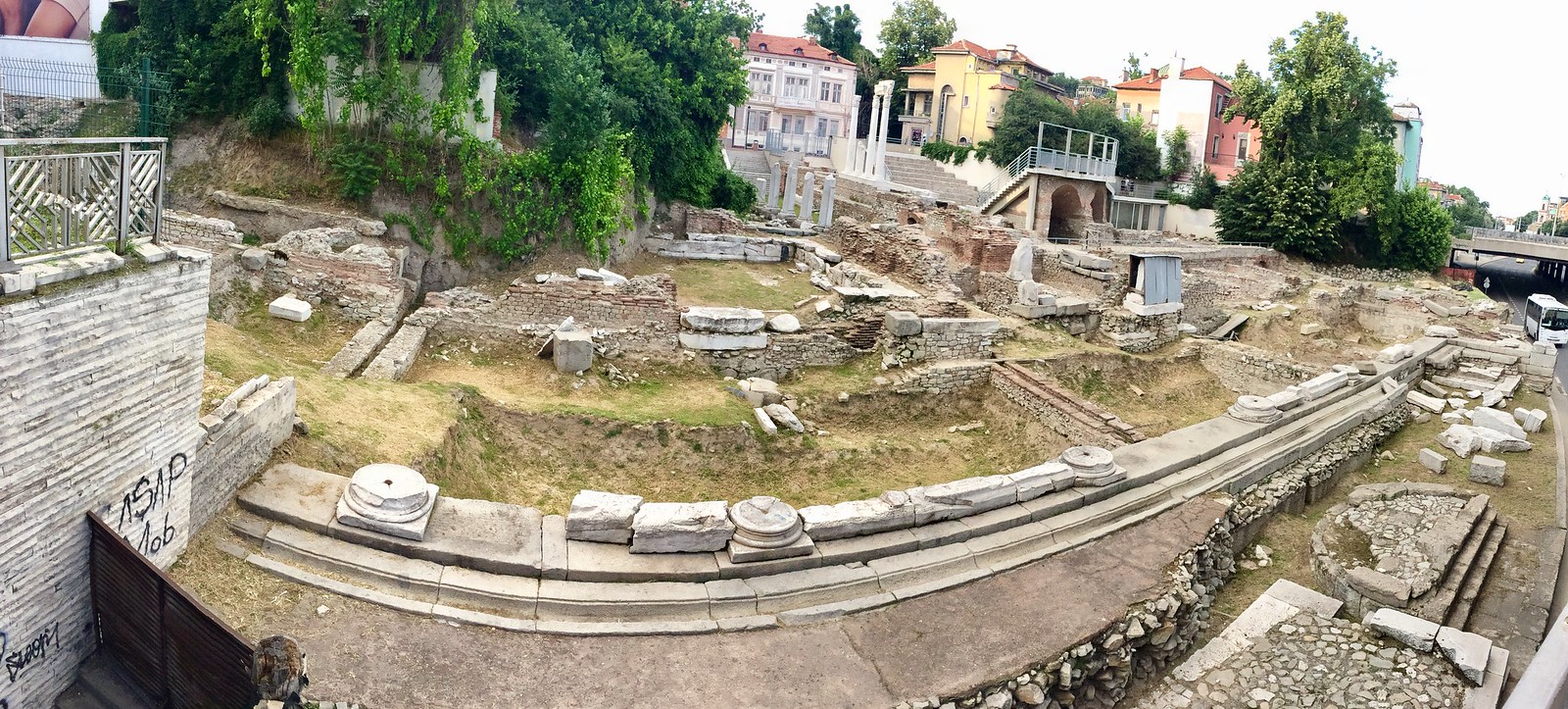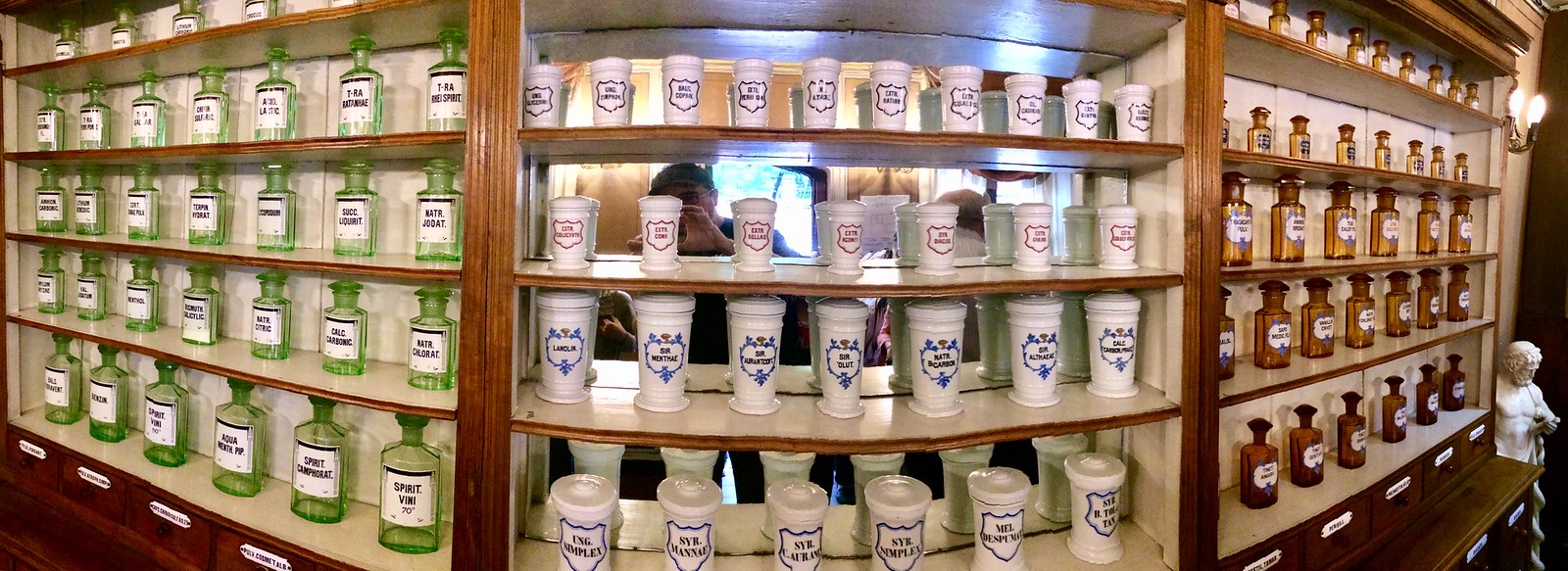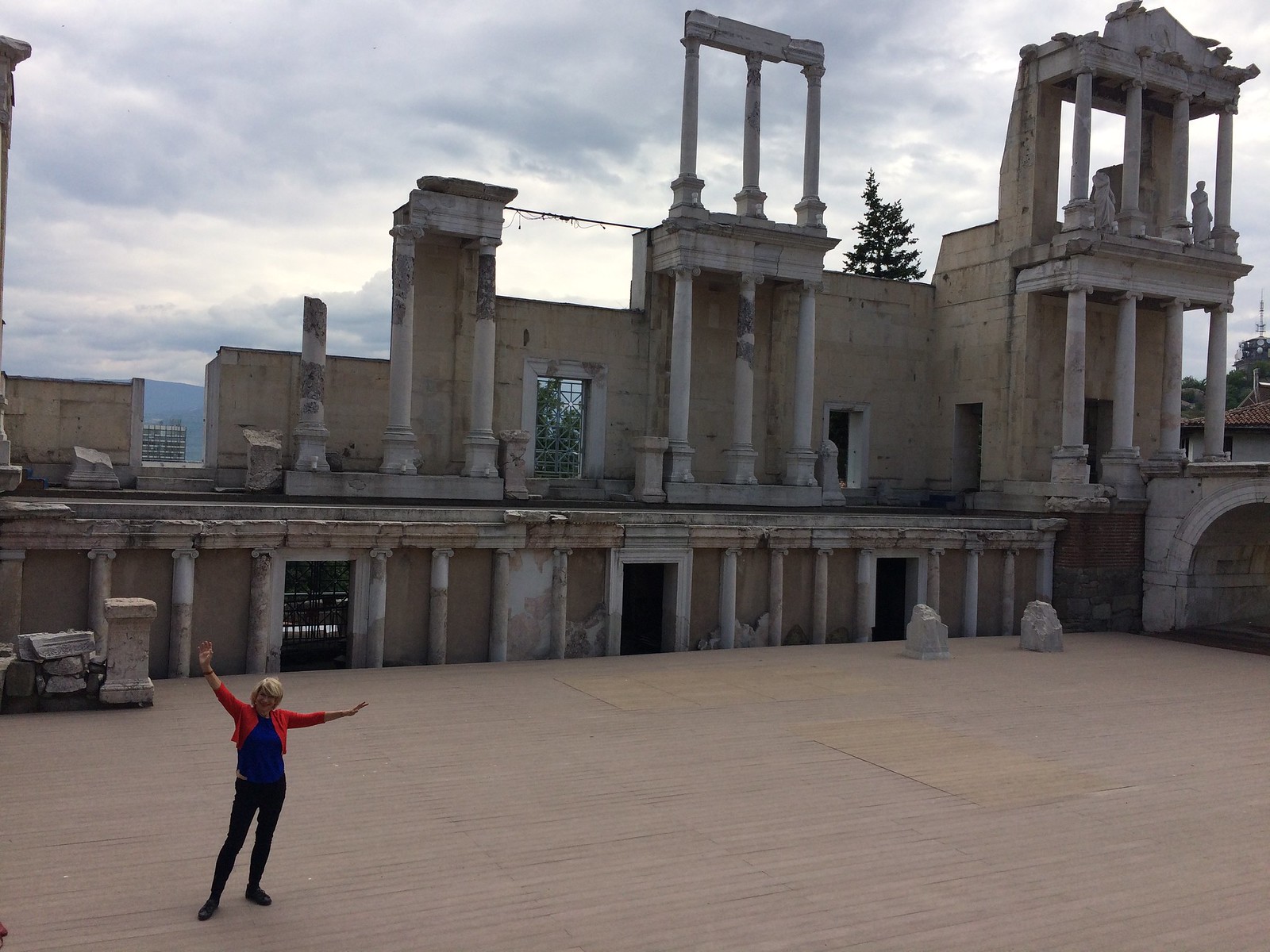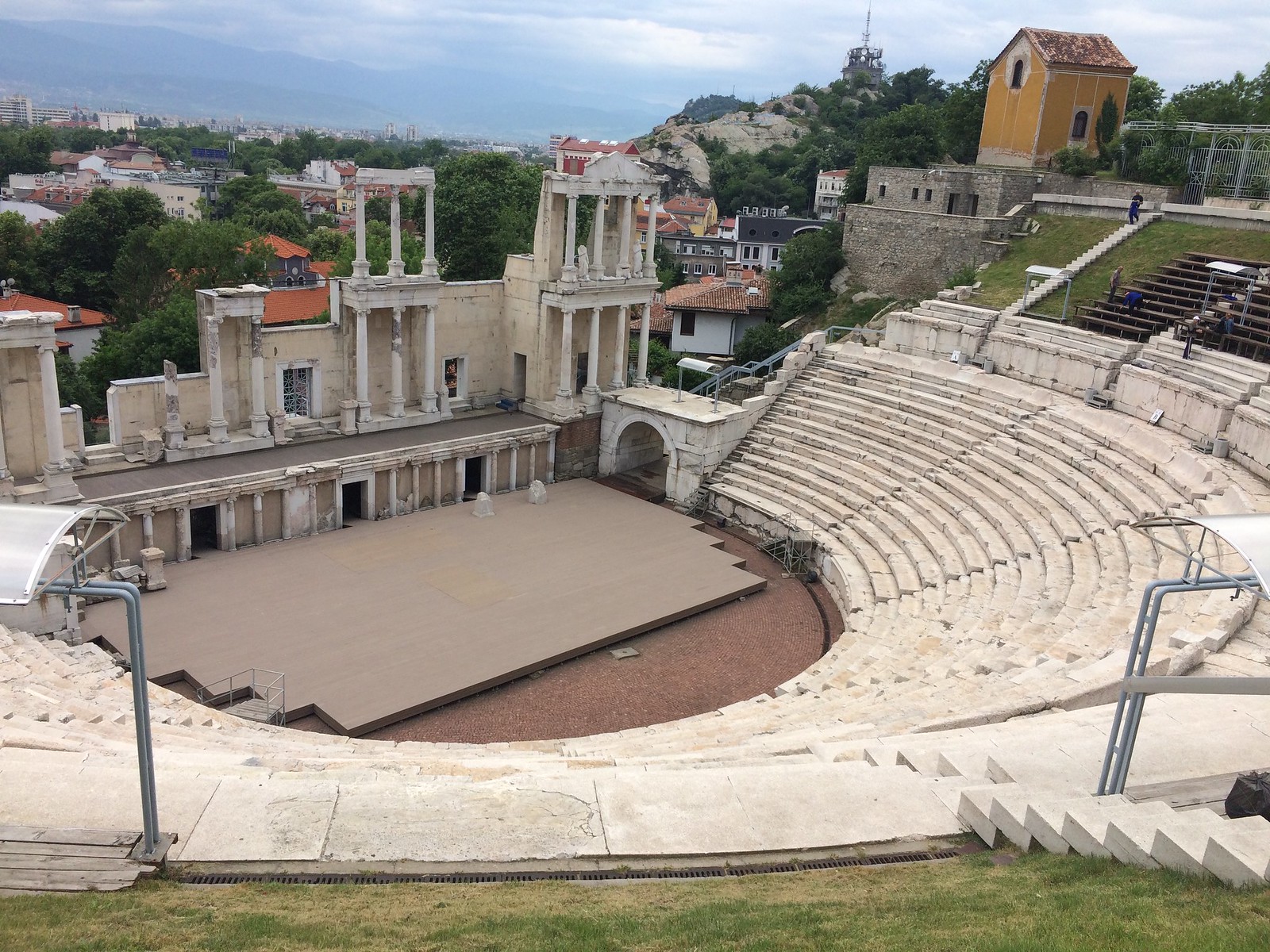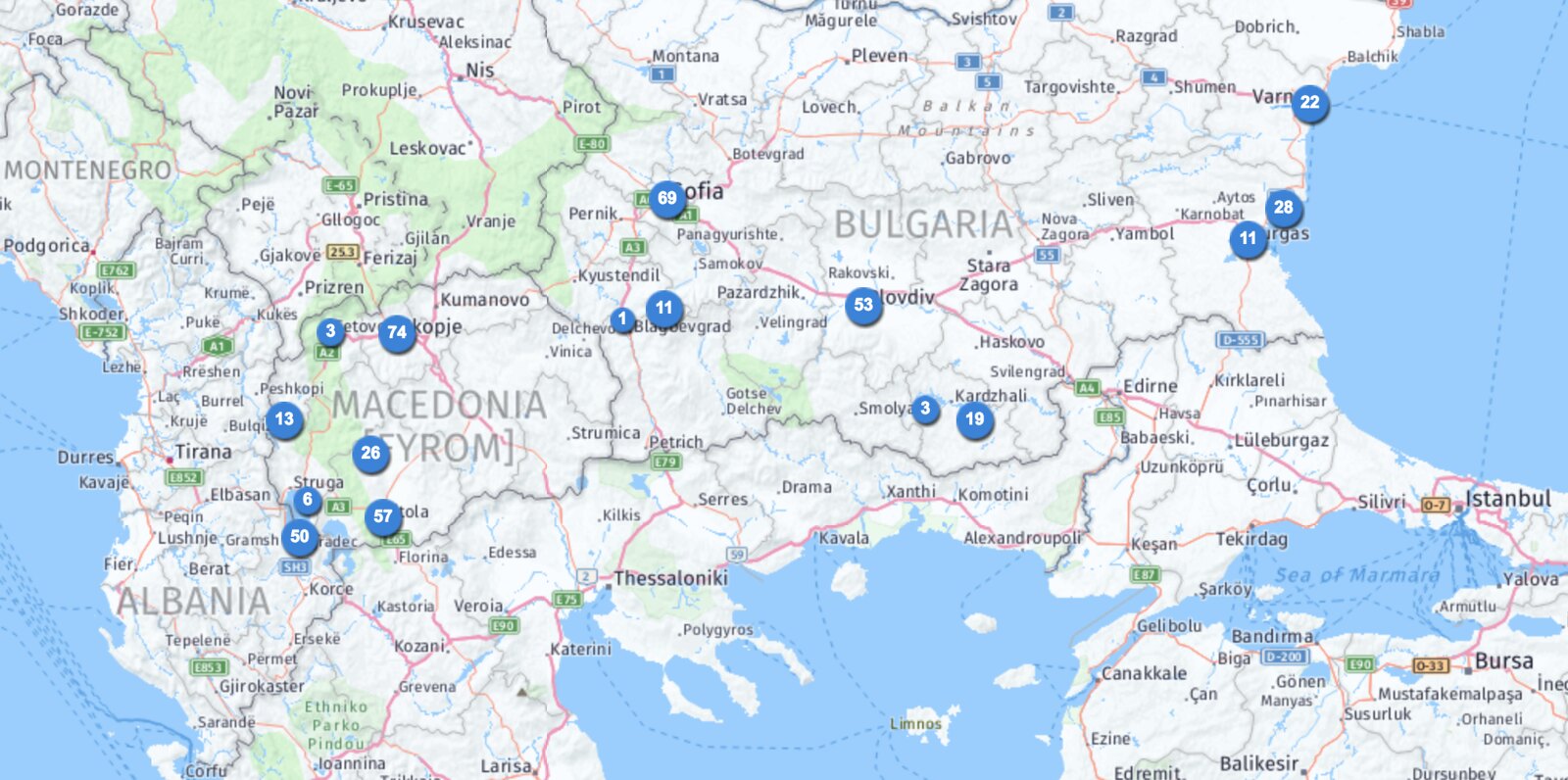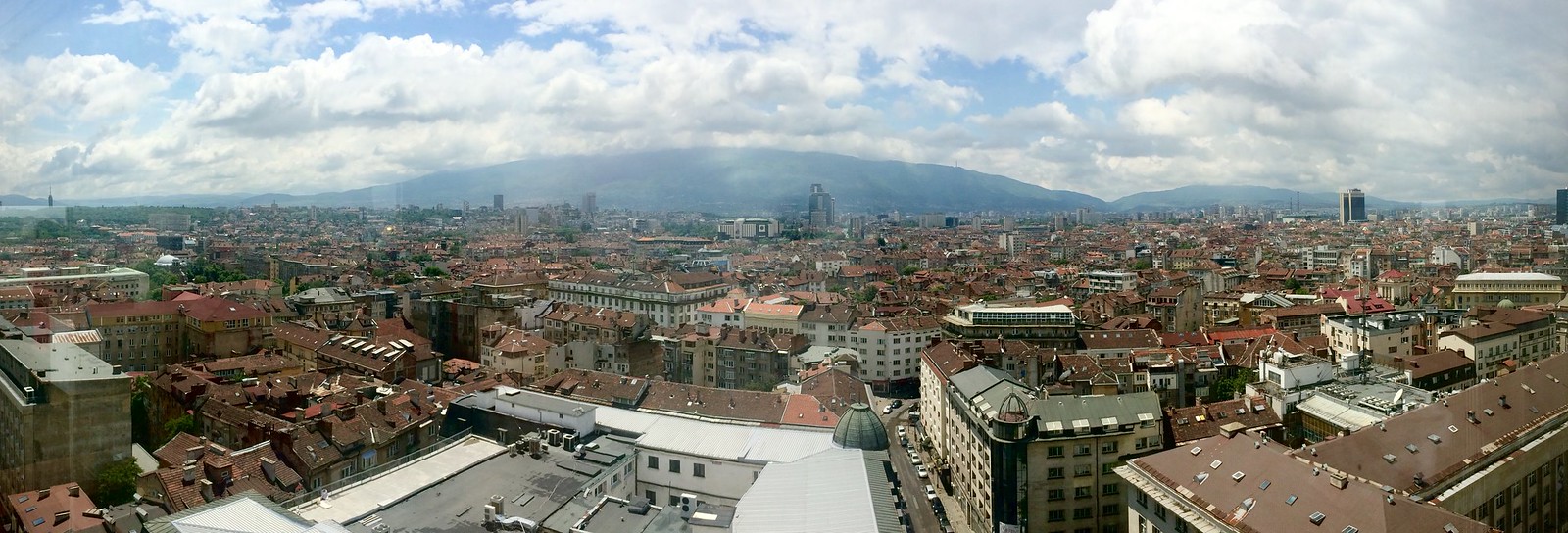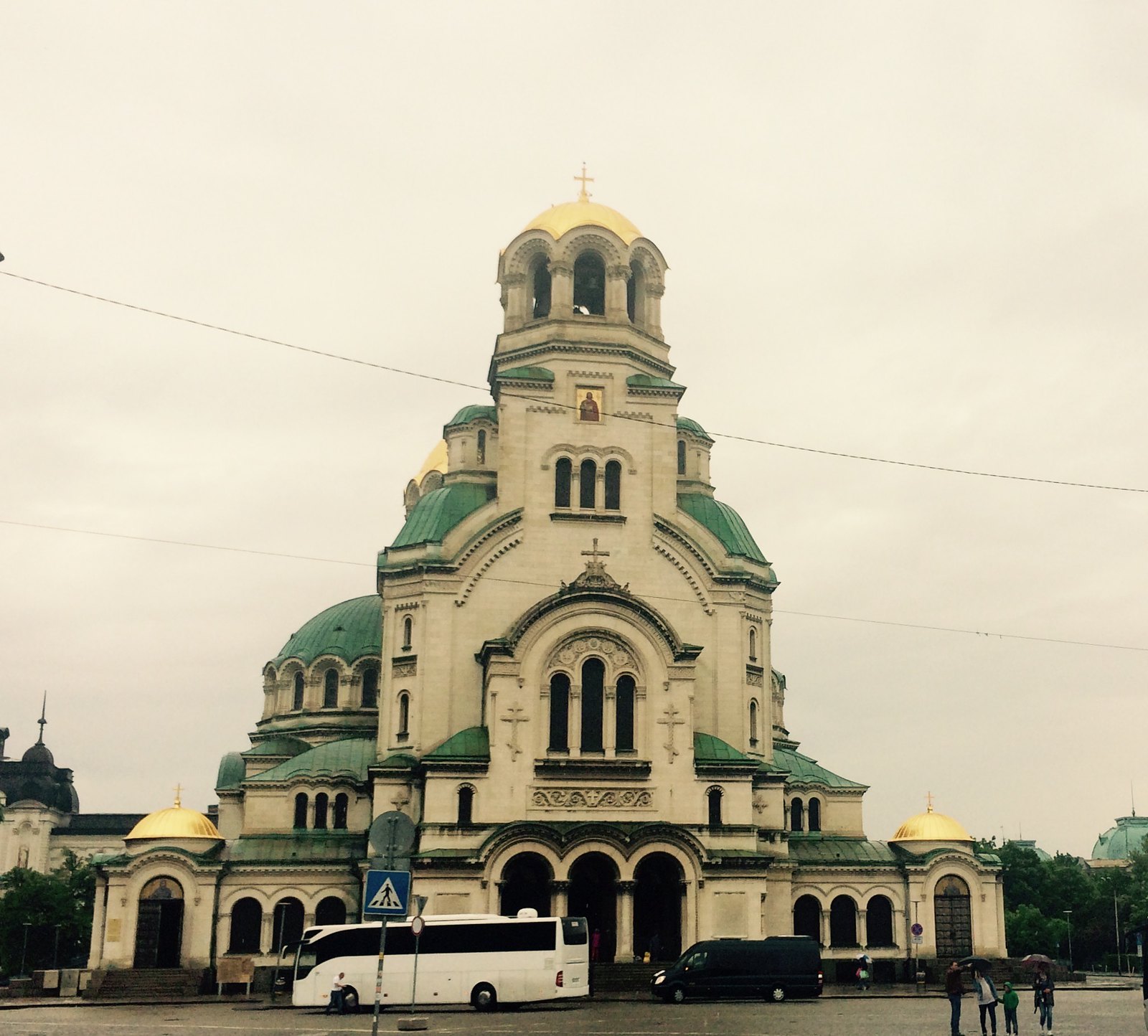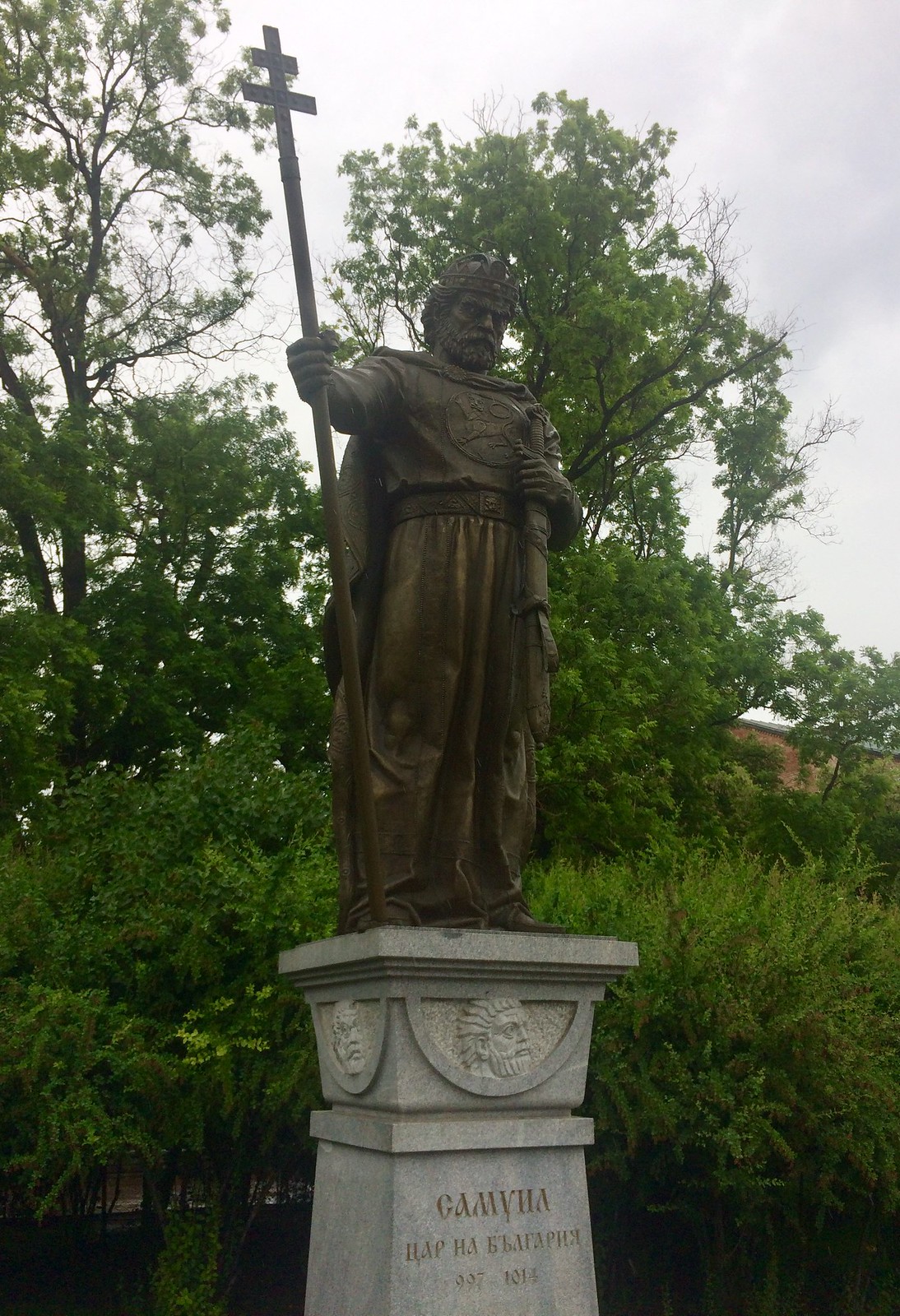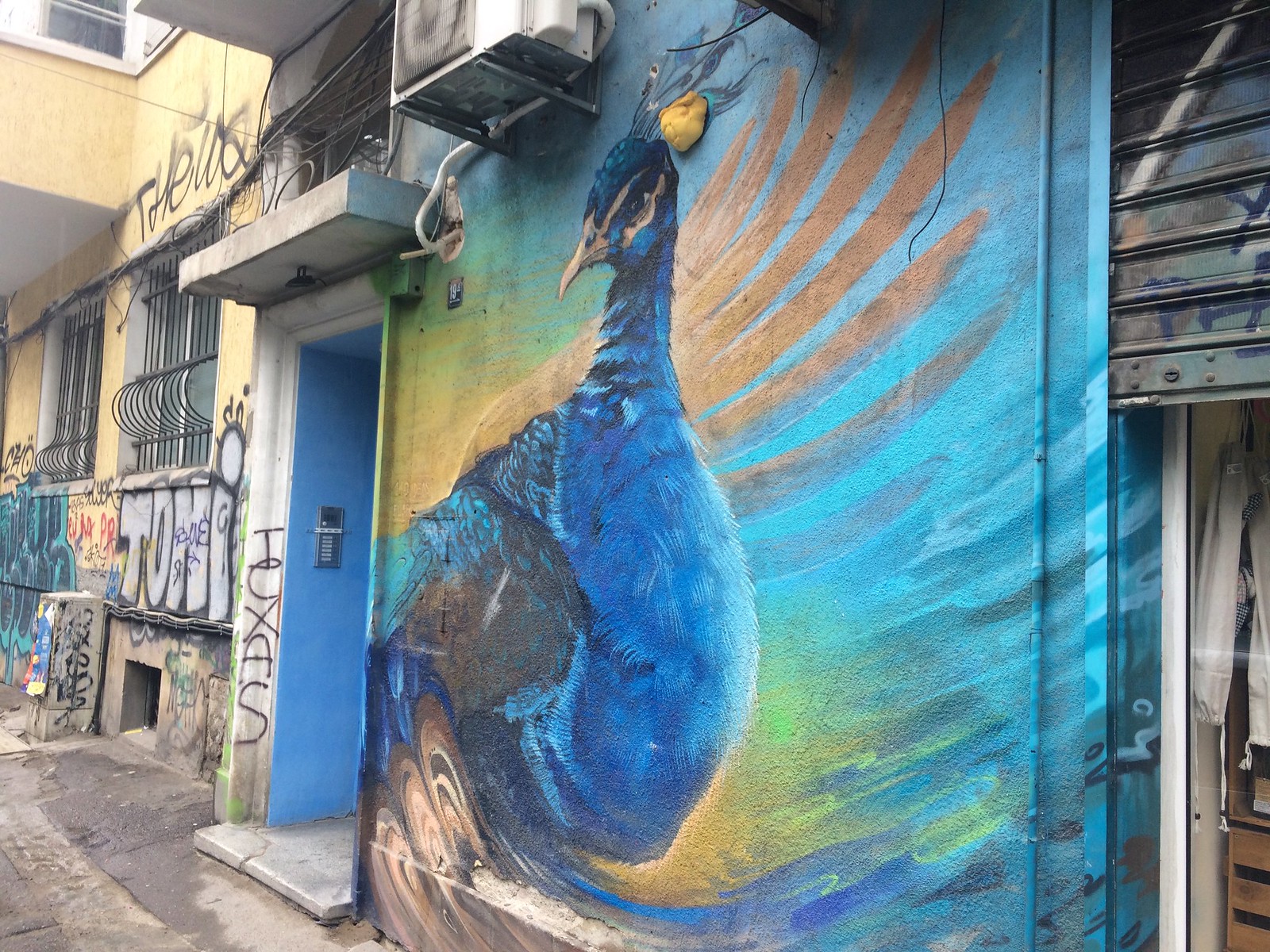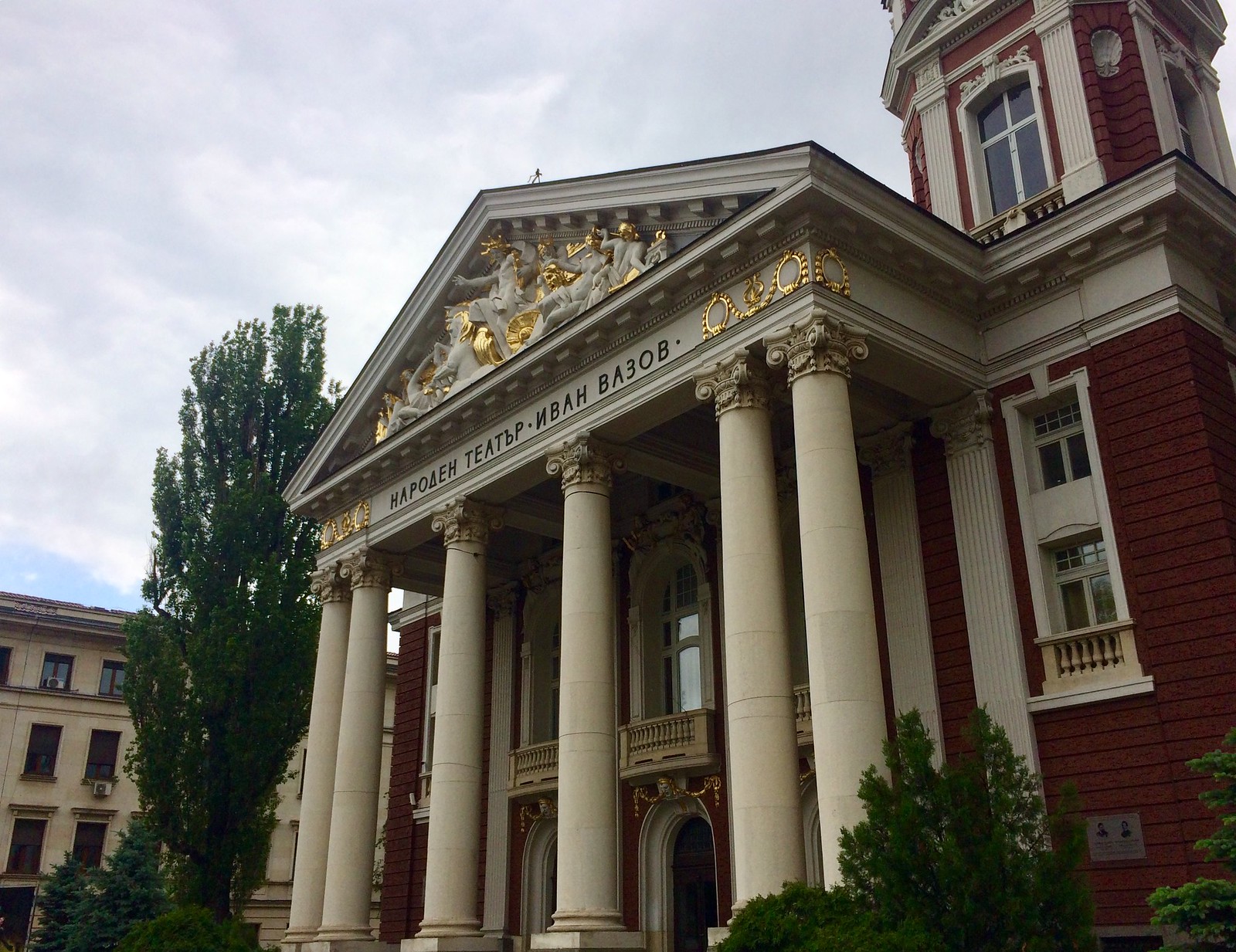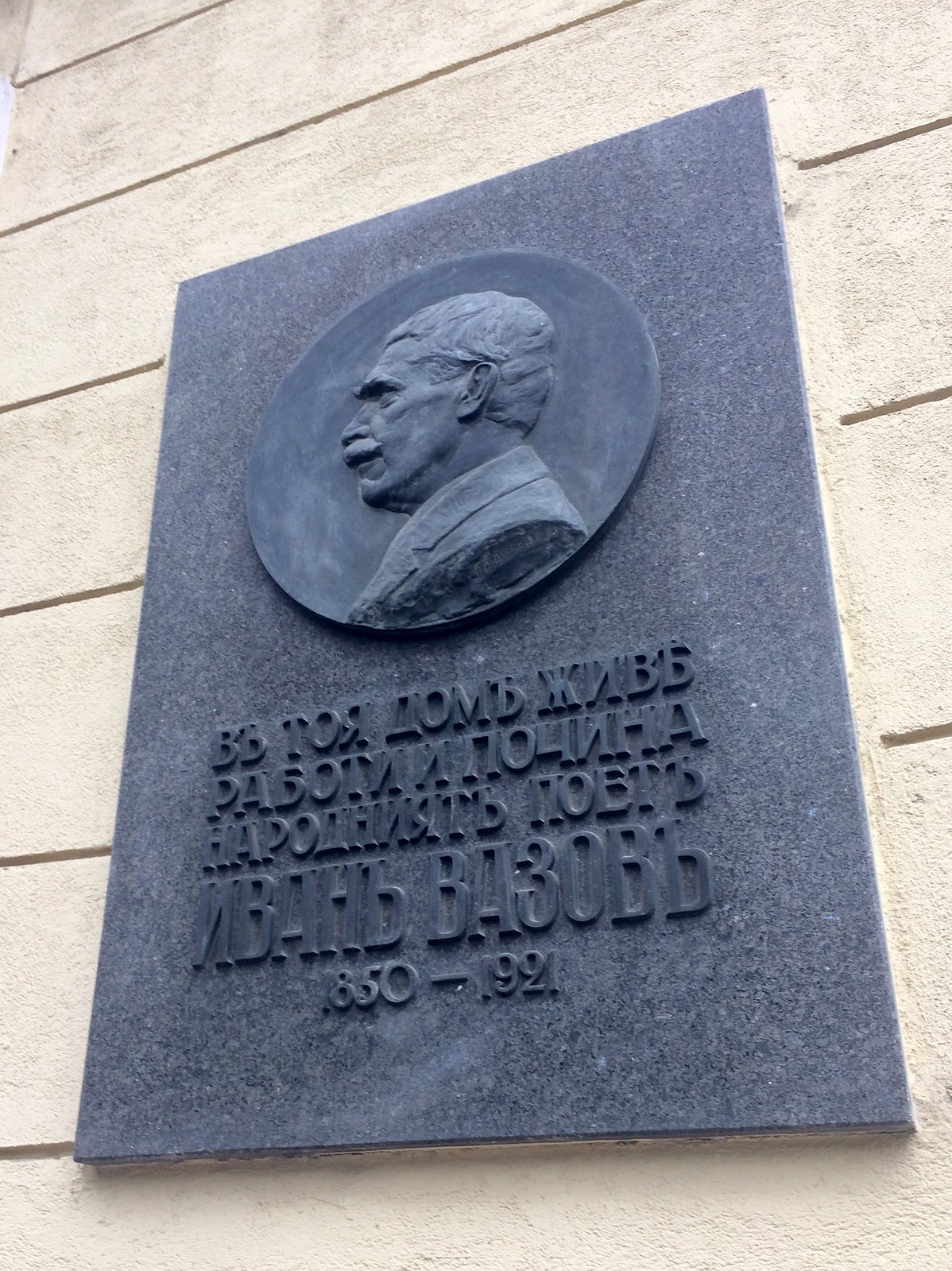Kruševo
Perched on top of mountain, there's like trees trees trees and then all of a sudden pow: a town.
Amazing hotel high above valley.
 201705 - Balkans - View Above Kruševo - 50 of 101 - Krushevo, May 27, 2017
201705 - Balkans - View Above Kruševo - 50 of 101 - Krushevo, May 27, 2017
 201705 - Balkans - Kruševo Town from Above - 51 of 101 - Krushevo, May 27, 2017
201705 - Balkans - Kruševo Town from Above - 51 of 101 - Krushevo, May 27, 2017
Aromanian population
Oppressed group in Albanian part of Ottoman Empire, speak a language derived from Romanian. Arromanian were successful merchants, intellectuals. Pasha hated them and destroyed their culture and infrastructure. A bunch of them pulled up stakes and established a completely new town (Kruševo) on top of a mountain where nobody could mess with them.
Makedonium)
One of the most important monuments for Macedonians. Whole set of memorial sculptures. 1974, during Communist area.
Memorializes the Ilinden Uprising of 1903 and Macedonian freedom in general
- Broken Chains -- Broken chains after five centuries of foreign rule. Five chain links for five centuries
- Cannon sundial -- Projections have names of intellectuals and heroes
- Decision place -- where soldiers gathered on 13 August 1903 to decide for the Ilinden uprising, which led to short-lived Kruševo Republic
- Ilinden -- shaped like a big Socialist Realist Mace -- symbol of Macedonian struggle for freedom. Door has an "M" motif. 12 Windows for 12,000 soldiers.
- first window the 19th century partisans
- Second window the 1903 uprising
- third window WWII
- Fourth window for freedom
- Traditional Clothes -- similar to Turkish dress all across Ottoman Balkans. Non-Muslims a little bit looser.
- Uniform of soldiers Beret white
- Nikola Karek -- leader of uprising
- Manifesto -- uprising was joint Muslim and Christian against Sultan. Flag showed two shaking hands. Motto of fighters was Freedom or death. Yellow and Green windows are Freedom, dark blue windows are Death.
- Uprising did not receive support of Russia or else wise Europe
- Guide was Arromanian.
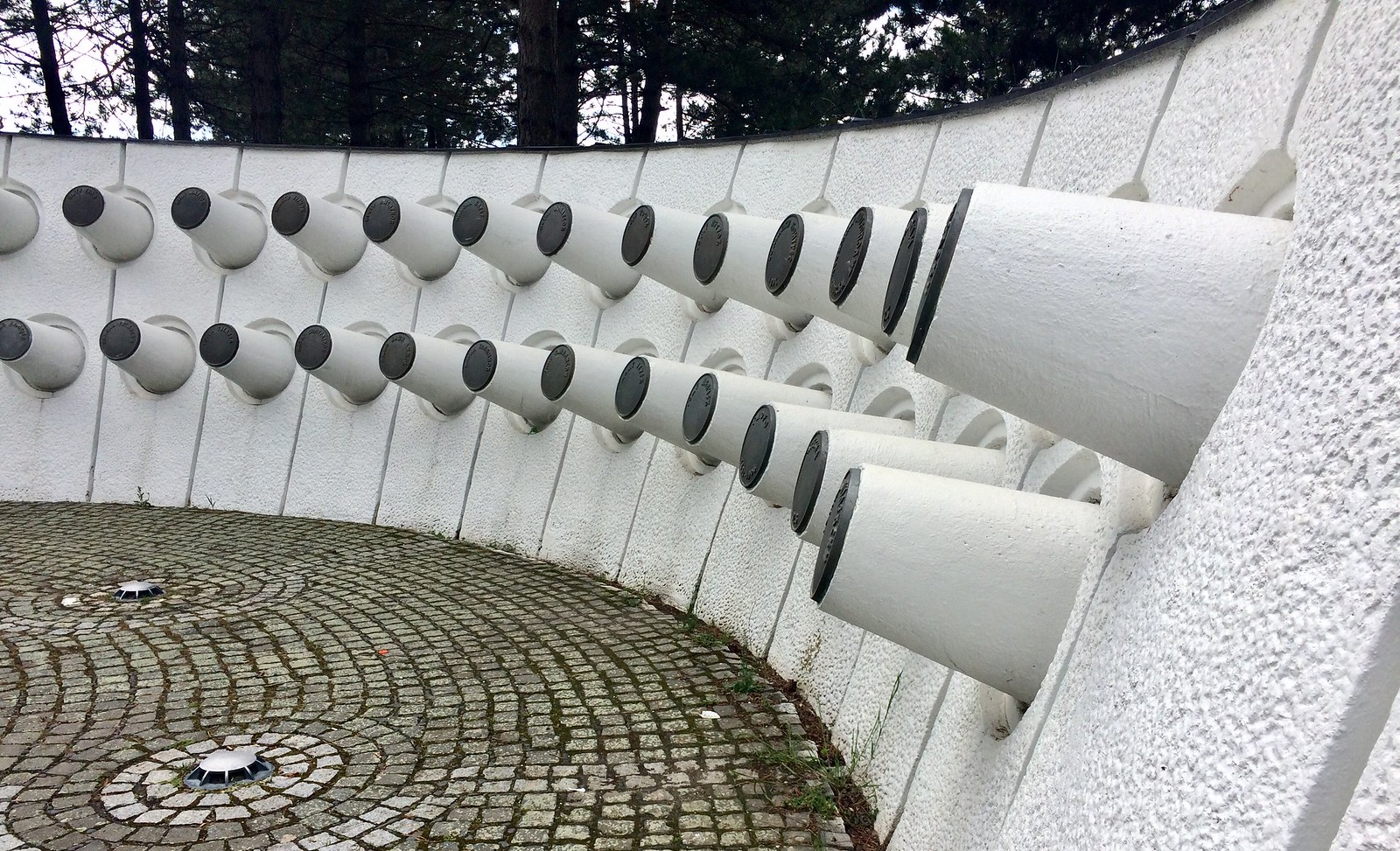 201705 - Balkans - Makedonium Cannon Sundial - 26 of 66 - Bitola - Krushevo, May 27, 2017
201705 - Balkans - Makedonium Cannon Sundial - 26 of 66 - Bitola - Krushevo, May 27, 2017
 201705 - Balkans - Makedonium Ilinden - 52 of 101 - Bitola - Krushevo, May 27, 2017
201705 - Balkans - Makedonium Ilinden - 52 of 101 - Bitola - Krushevo, May 27, 2017
 201705 - Balkans - Ilinden Group Photo - 42 of 95 - Bitola - Krushevo, May 27, 2017
201705 - Balkans - Ilinden Group Photo - 42 of 95 - Bitola - Krushevo, May 27, 2017
 201705 - Balkans - Makedonium Ilinden Interior - 39 of 95 - Bitola - Krushevo, May 27, 2017
201705 - Balkans - Makedonium Ilinden Interior - 39 of 95 - Bitola - Krushevo, May 27, 2017
Toše Proeski memorial
Memorial and museum of Toshe Proeski The "Elvis of the Balkans". Died in a car accident. Wrote pop versions of old traditional songs in a modern way. Glass modernist house
Trip to витола Bitola
(sp Bitola but pronounced "Vitola")
Valley central to country, the breadbasket of Macedonia. Continues into Greece. Prilep, Vitola cities
Bitola
One of the most important cities in Empire during Ottoman rule. Still 16 consulates in Bitola (U.K., France, Russia, etc). Population is 100,000, 80k in urban part, second largest city in Macedonia . Less than 20km to Greece
- Mosque beginning of 16th c
- Mezistan: enclosed market going back to Ottoman times
- Dragor river, small river passing through Bitola
- Yenijami Mosque, four centuries old. Dome and spire. Currently an Art Gallery
- Clock Tower: In every big merchant city in Ottoman there was a central clock tower. Cross was added at beginning of 1900s. Chimes on the fifteen minutes.
- Angel statue dedicated to 2001 conflict veterans.
- Like Prilep, feels cosmopolitan even though not high population ()
- Shirok Sokka "Wide Street", a long pedestrian shopping street/commons
- Statue of Philip II, Alexander's dad, founder of Heraklia
- Coffee Shop, where I had coffee for the second time in my life. (Sorry, I wasn't bowled over)
- Statue of Milton Manaki, him and brother were first filmmakers in Balkans. made first documentary of Balkans. Annual film festival in Bitola
- Greeks come to Bitola to gamble
- Tito street, statue
- Last year the "Colorful Revolution" voted the corrupt party out of power. Building splashed with paint water balloons in all colors.
- houses along the Sokka are up to 200 years old, its an historically protected zone
- Statue of WWII partisans fought Nazis, 20s yo. Killed by Nazis.
- Ataturk studied in building with beautiful Arabic inscription
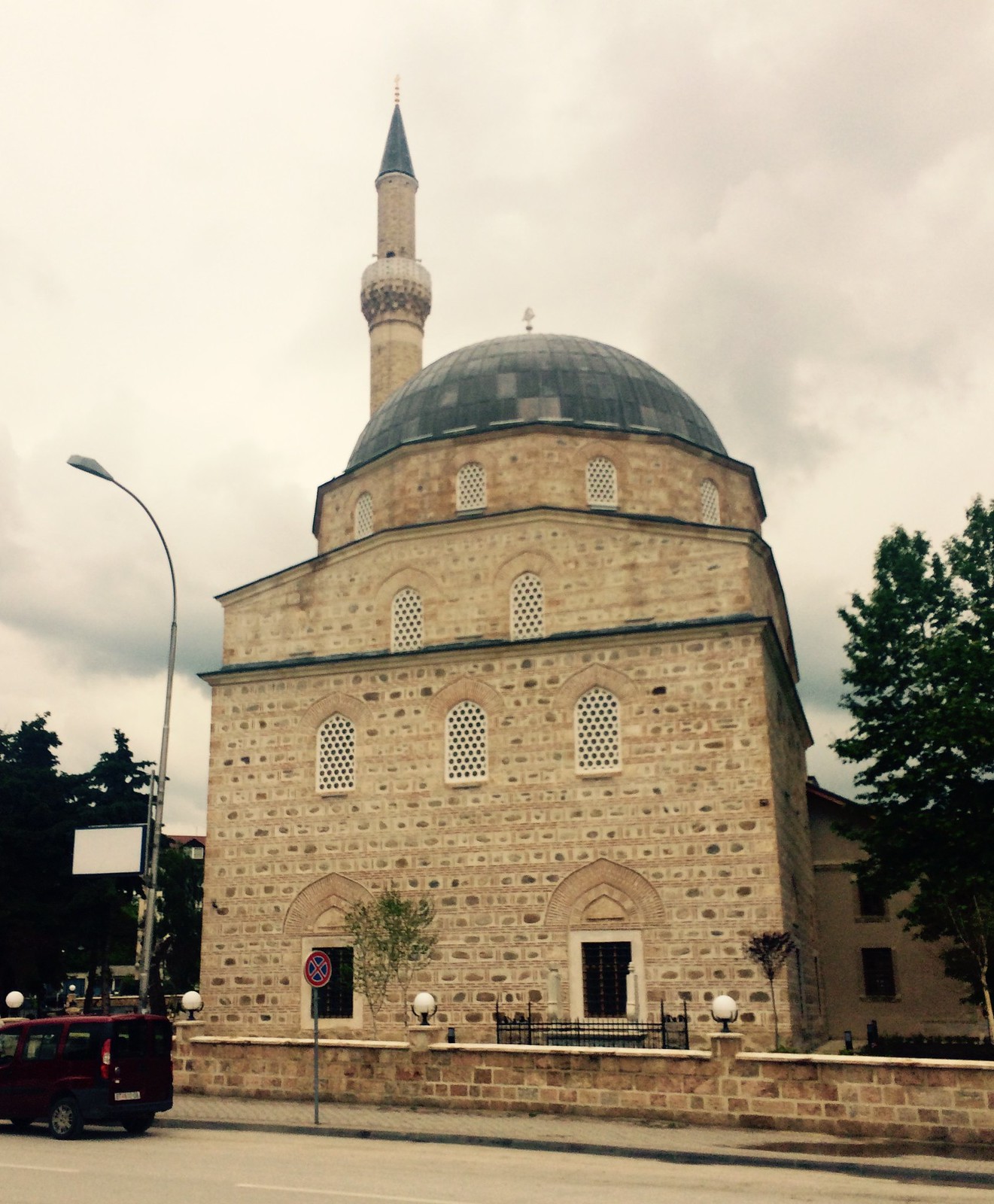 201705 - Balkans - Yeni Mosque - 30 of 40 - Bitola, May 27, 2017
201705 - Balkans - Yeni Mosque - 30 of 40 - Bitola, May 27, 2017
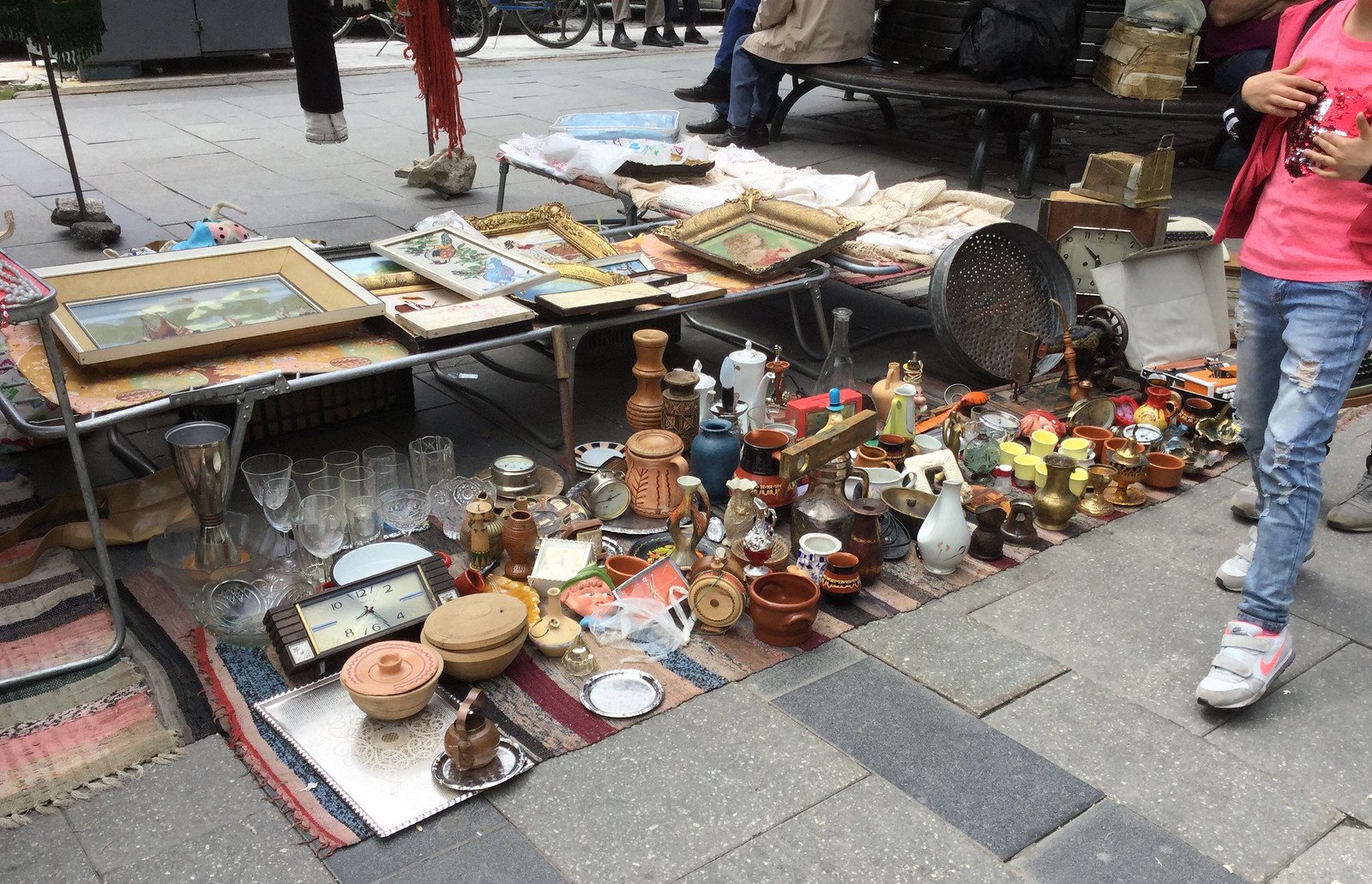 201705 - Balkans - Street Market - 48 of 95 - Bitola, May 27, 2017
201705 - Balkans - Street Market - 48 of 95 - Bitola, May 27, 2017
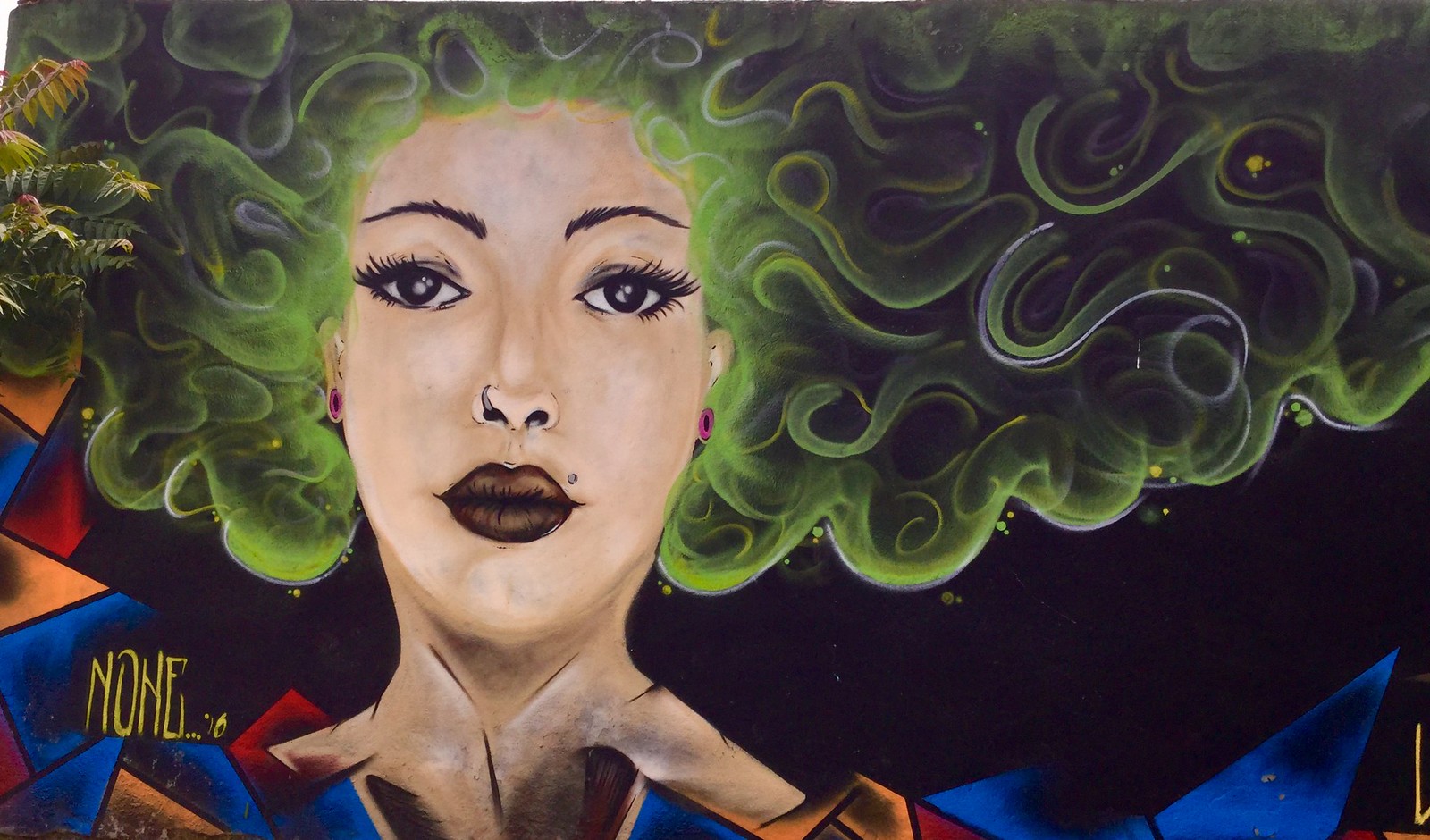 201705 - Balkans - Neon Woman Graffiti - 45 of 46 - Bitola, May 27, 2017
201705 - Balkans - Neon Woman Graffiti - 45 of 46 - Bitola, May 27, 2017
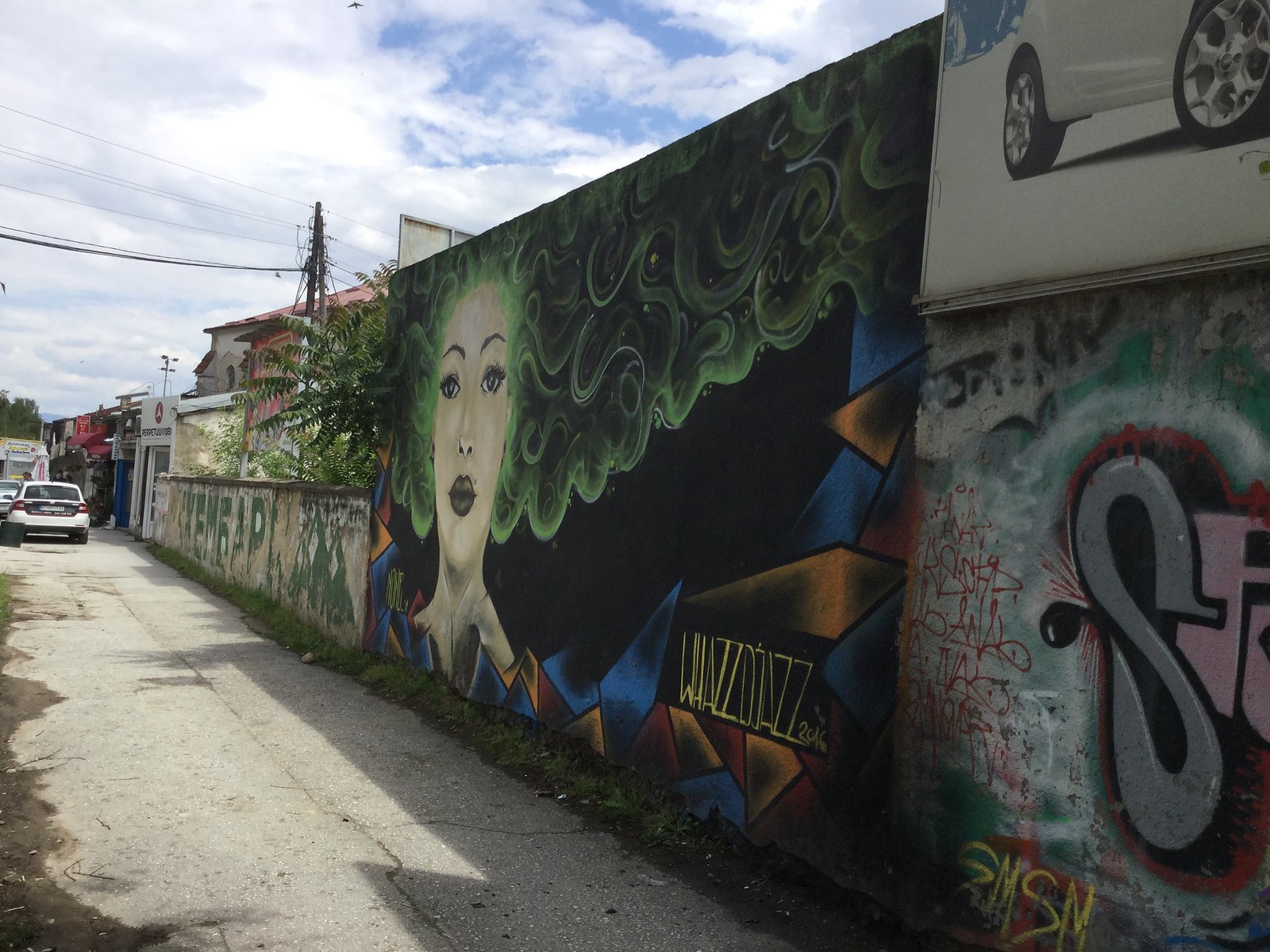 201705 - Balkans - Neon Woman Graffiti (full view) - 40 of 46 - Bitola, May 27, 2017
201705 - Balkans - Neon Woman Graffiti (full view) - 40 of 46 - Bitola, May 27, 2017
Heracles Lycenstis (Heraklea)
- Lykenstis local tribe
- 4-6th c CE, buildings built on top of Roman on top of Greek buildings
- In 58x earthquake destroyed all the ancient cities in this part of Balkans
- 10% of the city, spread out all over the area
- Therma Caldarium, frigidarium, therma. Marble floor over the brick flooring, heat circulated underneath.
- Sewer system. This is the commercial center of the city. Sewer ran down center of street under stones, so cart wheels could pass on either side.
- Statue of Nemesis Headless, because that's what invaders do when they raid a city. Hands pointed up or down, cut off
- Courtroom and Jail pillars were not found standing, erected
- Small Basilica -- Narthex, altar
- Large Basilica Narthex has the garden of eden mosaic.
- Lion and Bull su,bolivi got mortal world
- Eden: Fountain of life, peaceful animals
- Underwood: deer being devoured
- 20 colors, one of the most beautiful mosaics of this period
- Under building of Basilica
- Theater -- Amazing acoustics, 3500 seating capacity (there was an extended structure that doubled capacity)
- Drama, tragedy comedy; Galdiator fights
- Tunnels for entrance and exit
- Net rigged when wild animal fights
- Names of the family were inscribed on the good seats
 201705 - Balkans - Heraclea Lyncestis - 47 of 89 - Bitola, May 27, 2017
201705 - Balkans - Heraclea Lyncestis - 47 of 89 - Bitola, May 27, 2017
 201705 - Balkans - Heraclea Lyncestis Ancient Roman Mosaics - 59 of 89 - Bitola, May 27, 2017
201705 - Balkans - Heraclea Lyncestis Ancient Roman Mosaics - 59 of 89 - Bitola, May 27, 2017
 201705 - Balkans - Heraclea Lyncestis Ampitheater - 65 of 89 - Bitola, May 27, 2017
201705 - Balkans - Heraclea Lyncestis Ampitheater - 65 of 89 - Bitola, May 27, 2017
Jewish Cemetary
Most Jews lived in city centers as they were merchants and professionals
Weather
We've been really blessed, after the first day all rain we've experienced has been when we were driving anyway.
Aside: Youth Rights, and Drugs and Drink in the Balkans
After 16, children are emancipated (true across Europe), but still minors legally -- a "minor adult." Parents can't be discussed with Teacher unless student is present. Women after 16 don't have to consult parent before abortion or birth control or anything else medical. Age of 15 you can start working and have sole control of your money.
Drugs are easy to get, and though the drinking age is 18 there's no real penalty for getting caught with drink when under 18. There's no binge drinking like there is with US youths, and since drugs are available people better know there's a choice. Students on the program said they never messed around with drink etc when on exchange -- opportunity was too important, to the point that they'd stay home from parties.
No parental curfews for kids: in small town there's nowhere to go and "the neighborhood ladies know everything anyway"
Dihovo
Amazing lunch at a slow food villa, only natural local ingredients
Beekeeping tour
We suited up in hooded long sleeve suits Welcome to our Charnik, (beekeeping hives) Few different types of hives.
- Use a wood fired smoke can, with a a piece of burning wood and a bellows on one side
- Smoking of the bees so that they know something will happen and sedate them
- lowest part is the pollen store, and where the bees enter
- Second part is the brood
- Top part is where they gather honey
- raised one of the midsection blades. These are the male drone worker bees: the larger ones. 30,000 bees total.
- Closed honeycomb cells have baby bees. Egg, larva, cocoon, bee. We watched a baby bee coming out! It's in the center of the ring of open cells, top is cracked, Other bees were
- For first 10-15 defenders of hive, take over pollen and nectar from harvester
- Total life 45 days. Rest of time are harvesters. In winter can live for up to 6 months. Queen lives for 3-4 years
- Bigger cells are where the male drones are born. Queen cell is twice the size of other cells. Drones only born in summer, only job is to mate with the Queen. Mate with up to ten drones. Drones also keep the hive at 32-34C constant temperature.
- Others have fermented pollen. It cannot go bad, it lasts forever. It tastes buttery
- butt wiggles tell other bees coordinates of food. Good for a 2km radius.
- We can get pollen, besswax, honey and royal jelly
- Queen daily lays 2000-3000 eggs, only fed on royal jelly. Egg weight a multiple of her weight. One queen per hive (box of frames)
- Propolis, used to close the cells, good antibiotic properties
Two types of honey: dark forest honey from oak and pine trees, light one is from field flowers
"bee in the bonnet"? -- they say "flies in the head"
- Colony Collapse? Last year lost 50% of bees
- Zombie flies are a problem here, came from America, no way to control yet
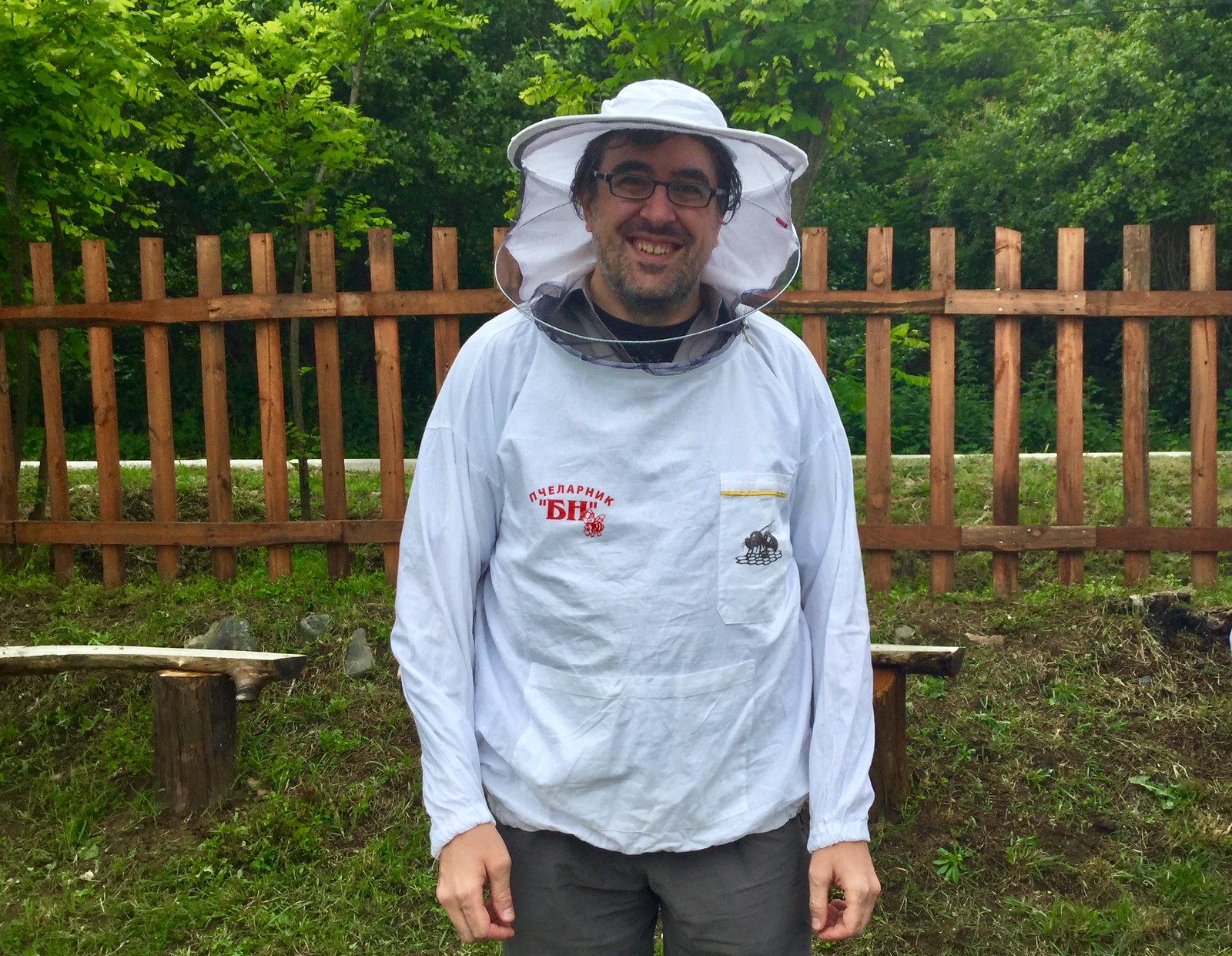 201705 - Balkans - Honey Farm - 55 of 95 - Bitola, May 27, 2017
201705 - Balkans - Honey Farm - 55 of 95 - Bitola, May 27, 2017
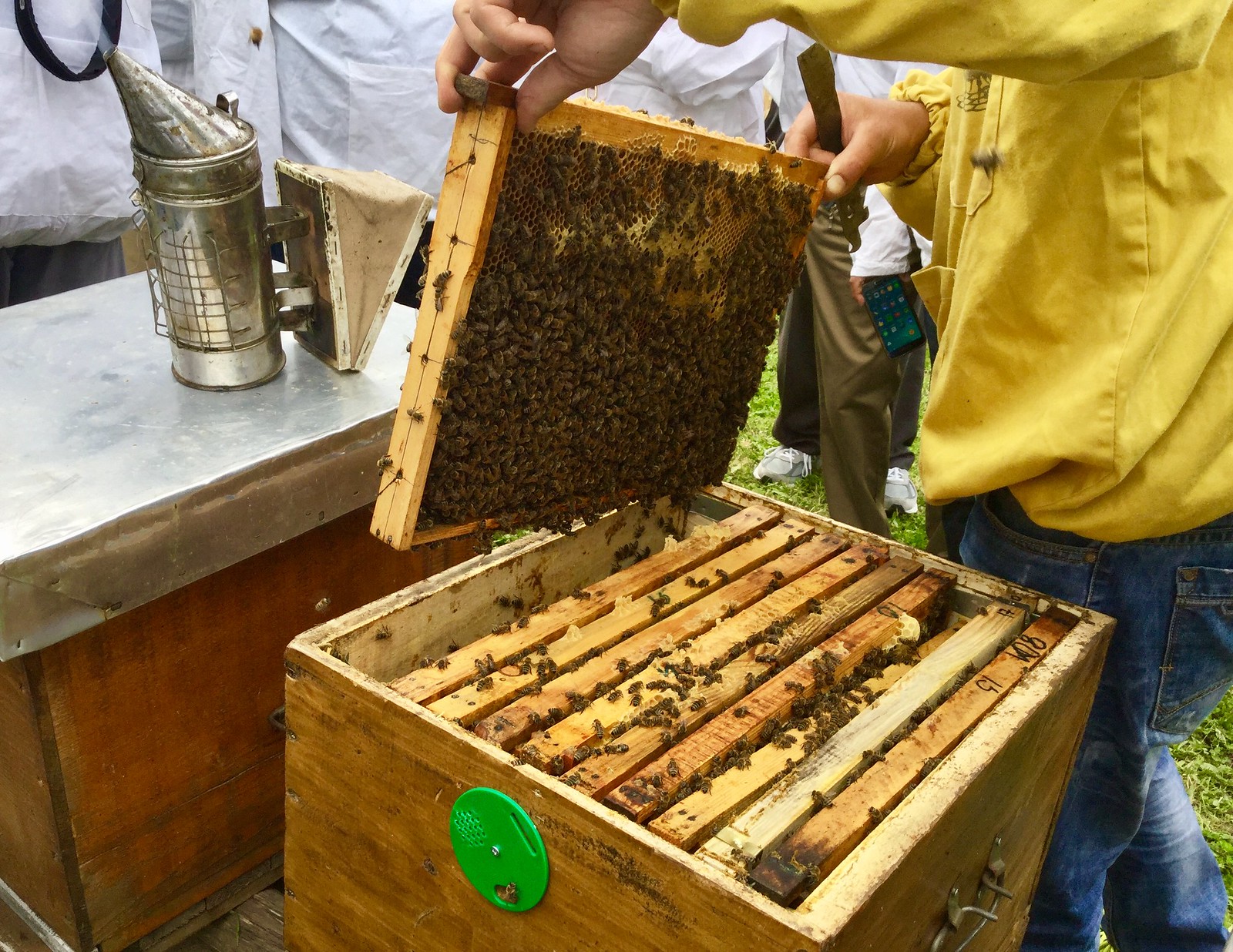 201705 - Balkans - Beehives - 61 of 101 - Bitola, May 27, 2017
201705 - Balkans - Beehives - 61 of 101 - Bitola, May 27, 2017
Ohrid
Two schools of Cyrillic literacy, Pesla or Ohrid On Ohrid lake, across the lake is Podgradatz, Albania -- "under the town" Popular tourist destination with Western European countries Important town for development of Orthodox Church
Ohrid old city
UNESCO Cultural and Historical Site, protected Statue of a Cross catcher: on day Jesus baptized, throw a cross in body of water, folks vie to get it out, one who does gets good fortune (and maybe prizes).
